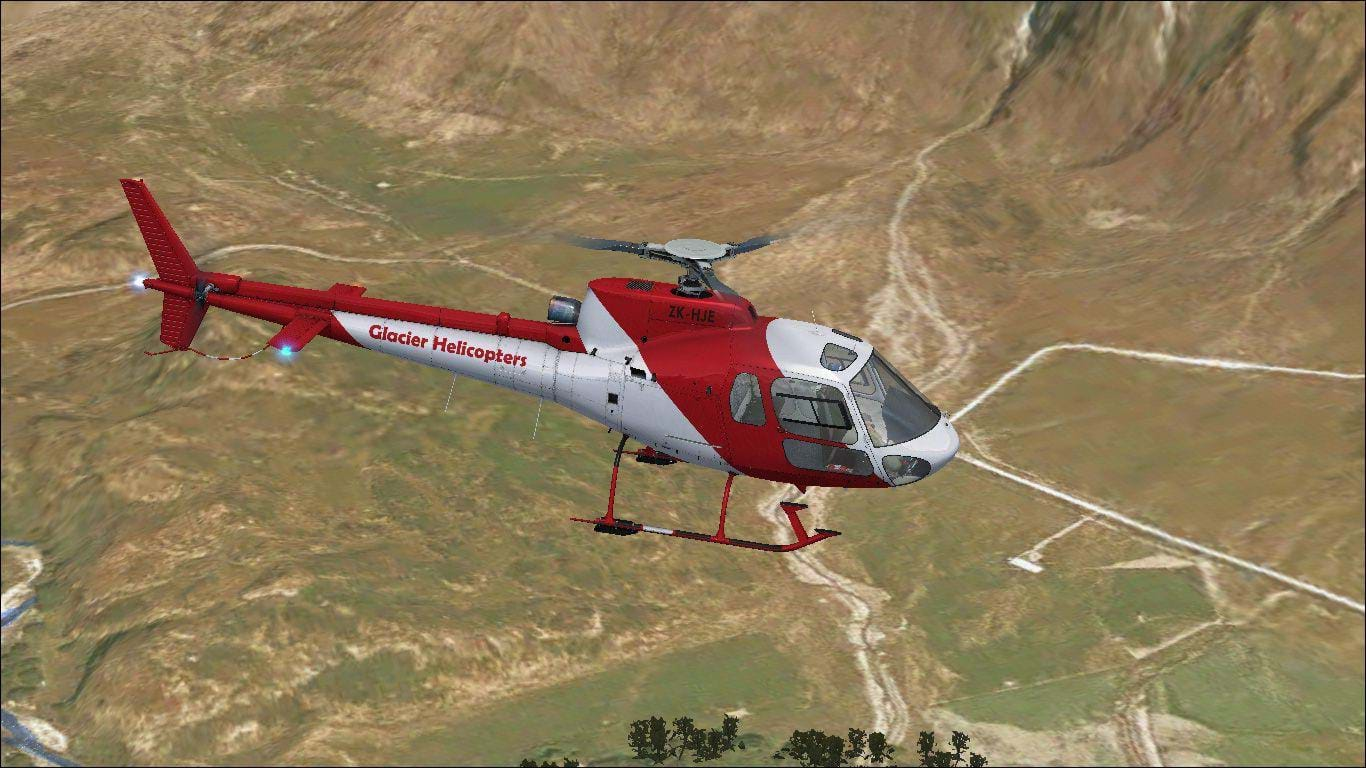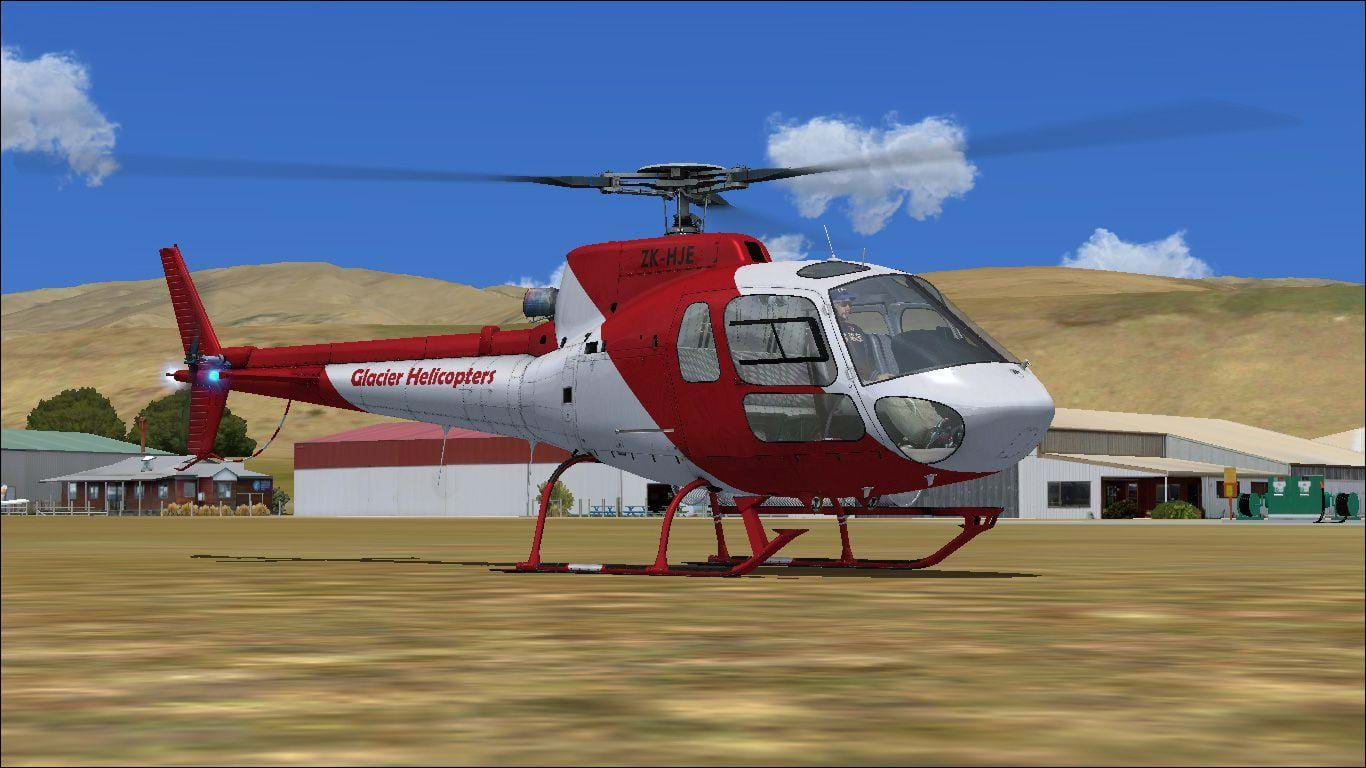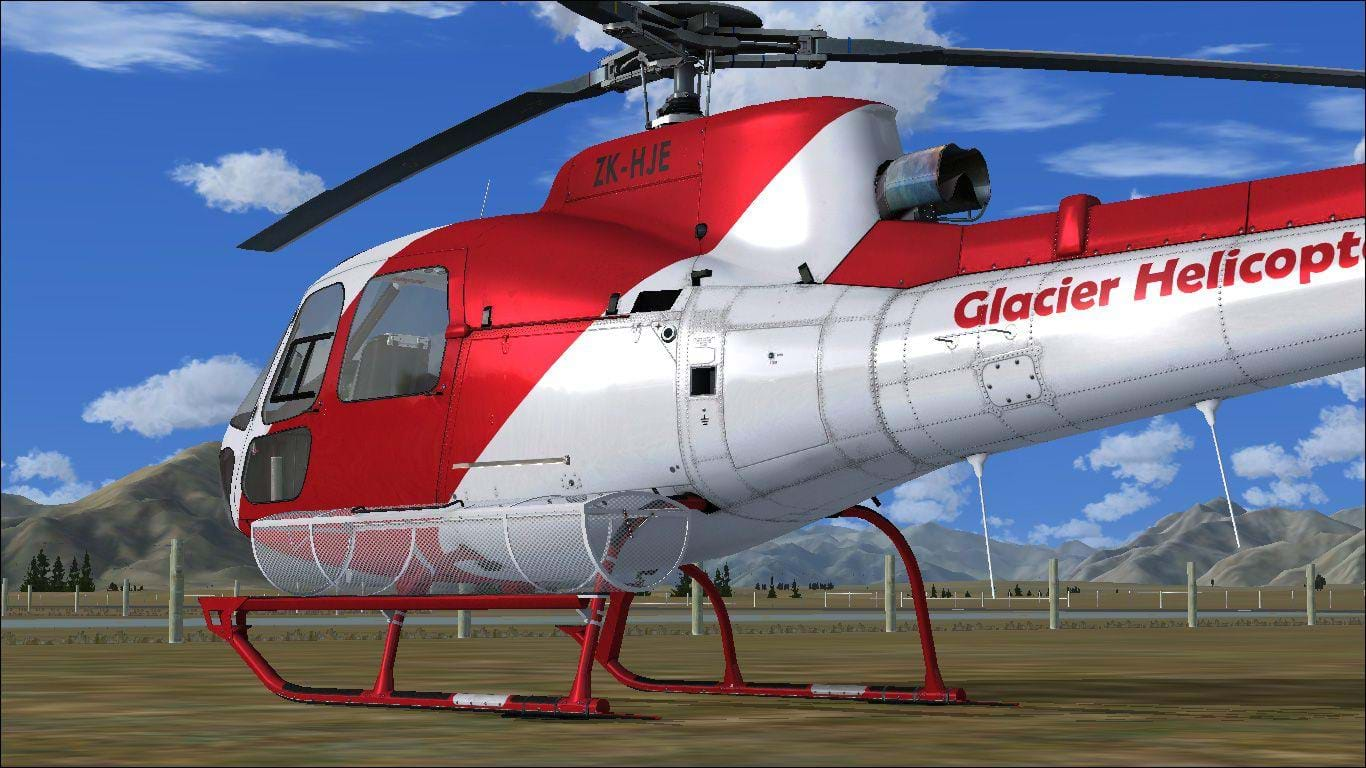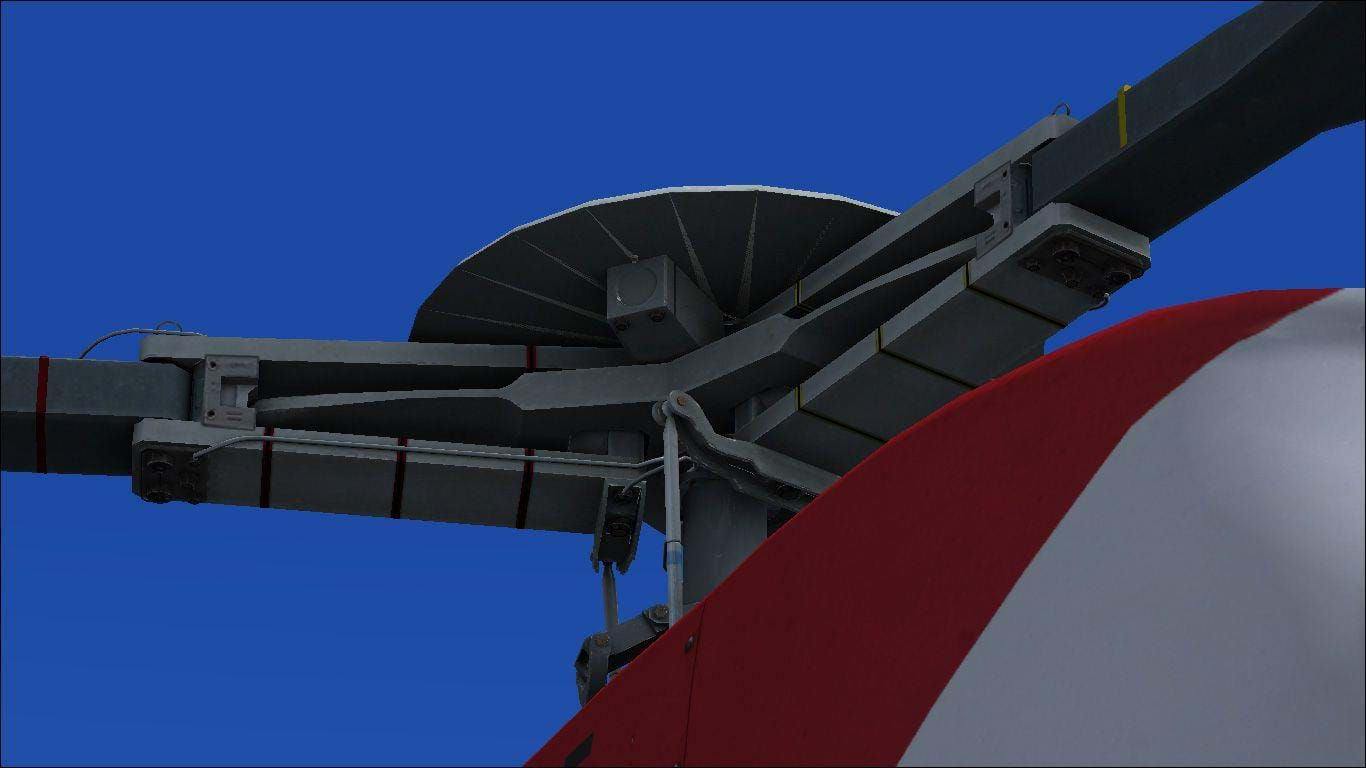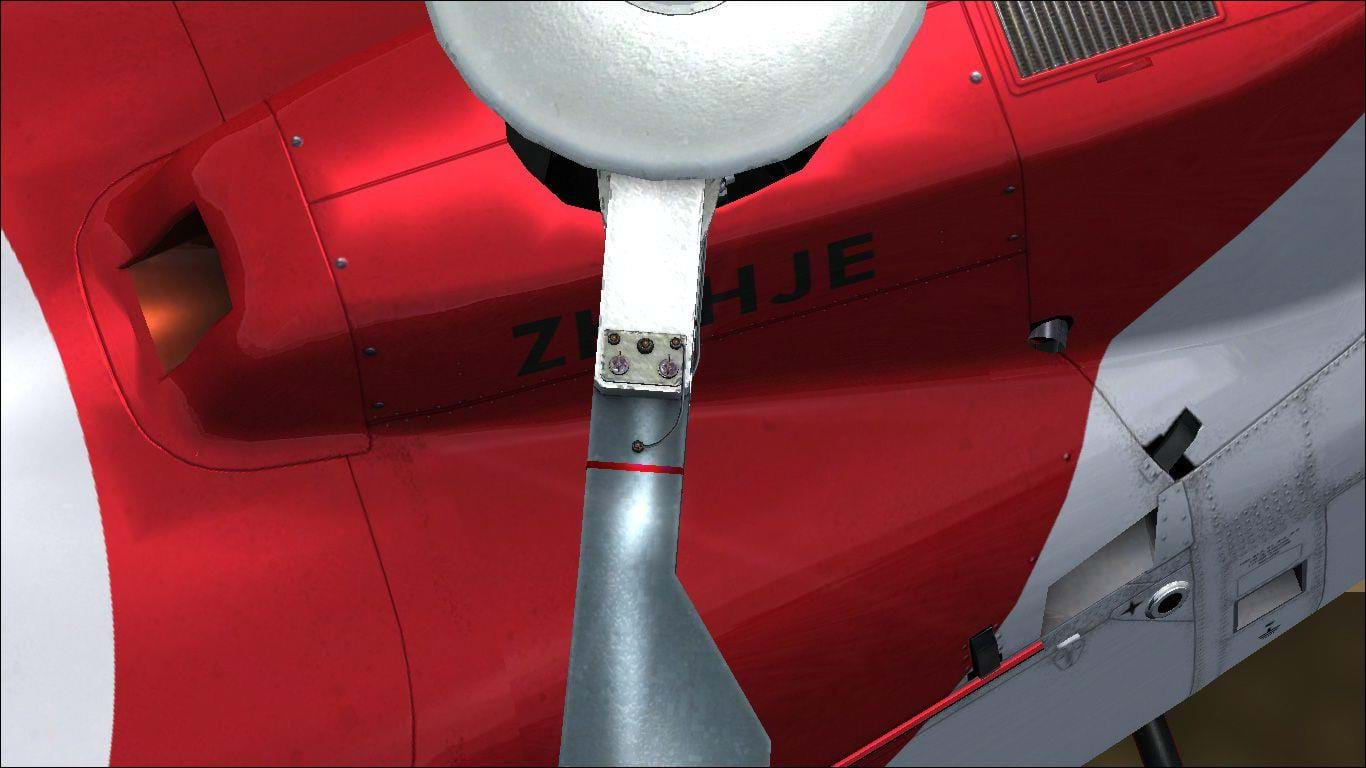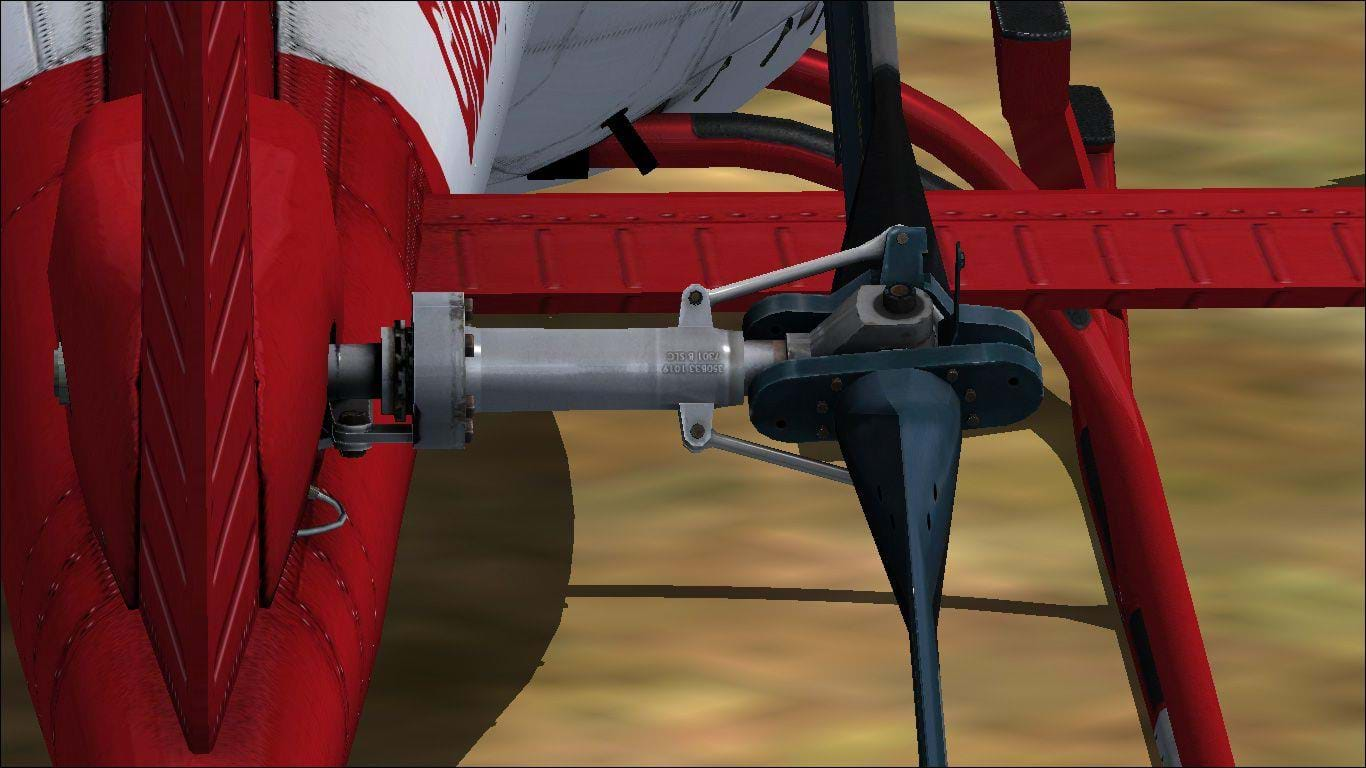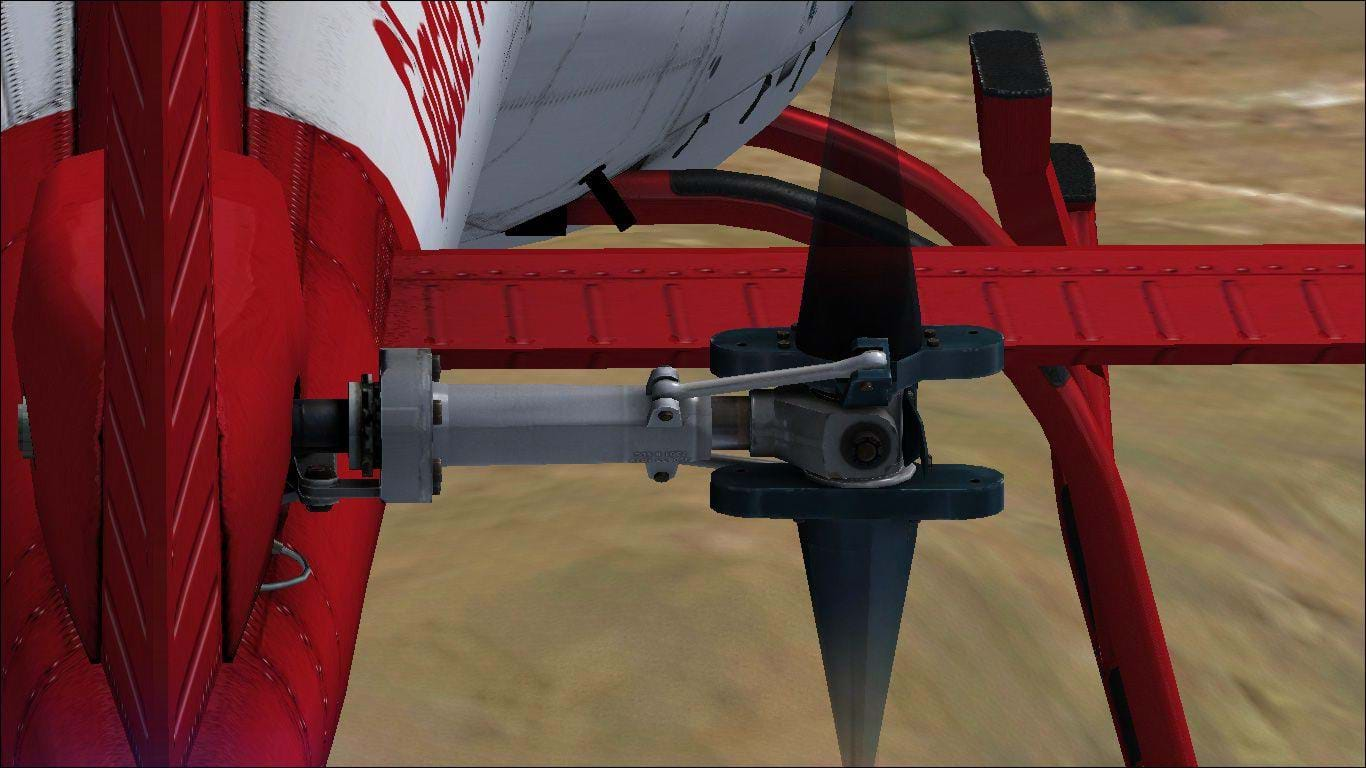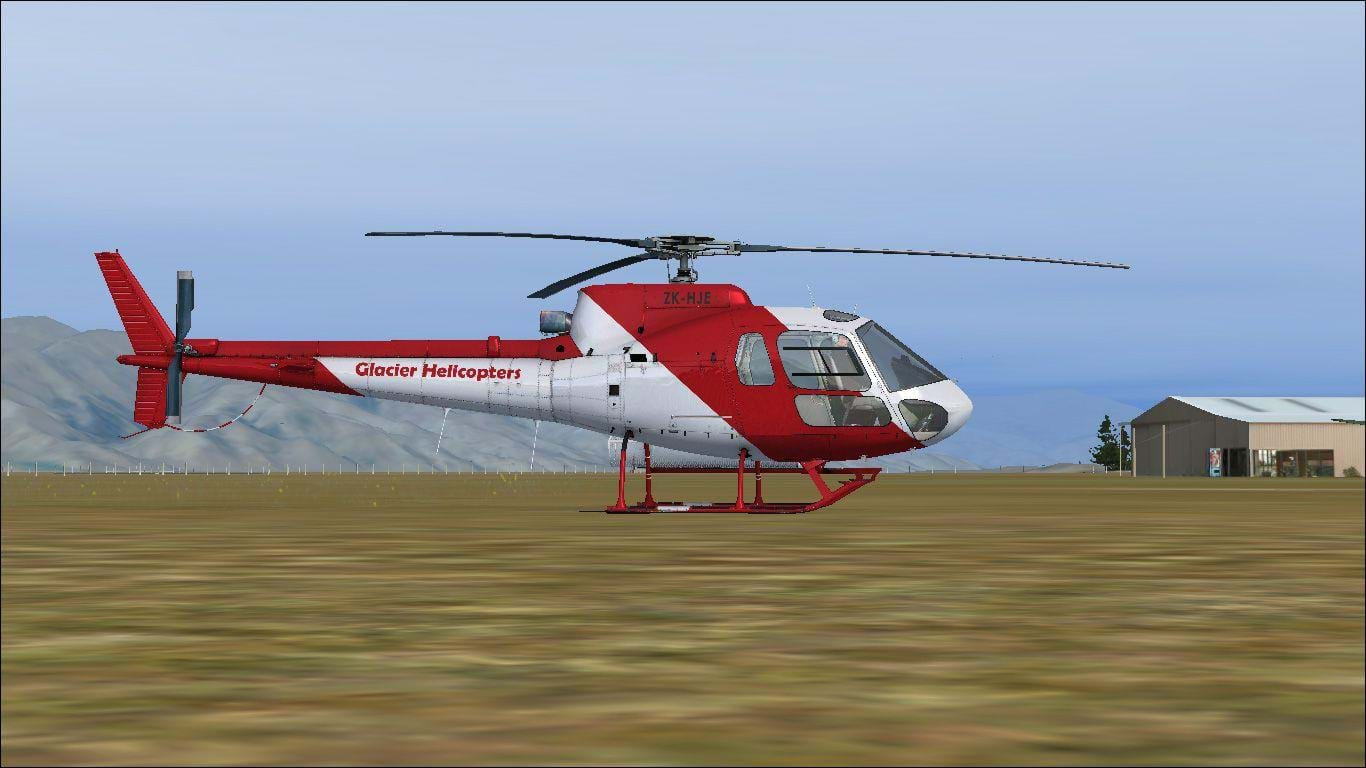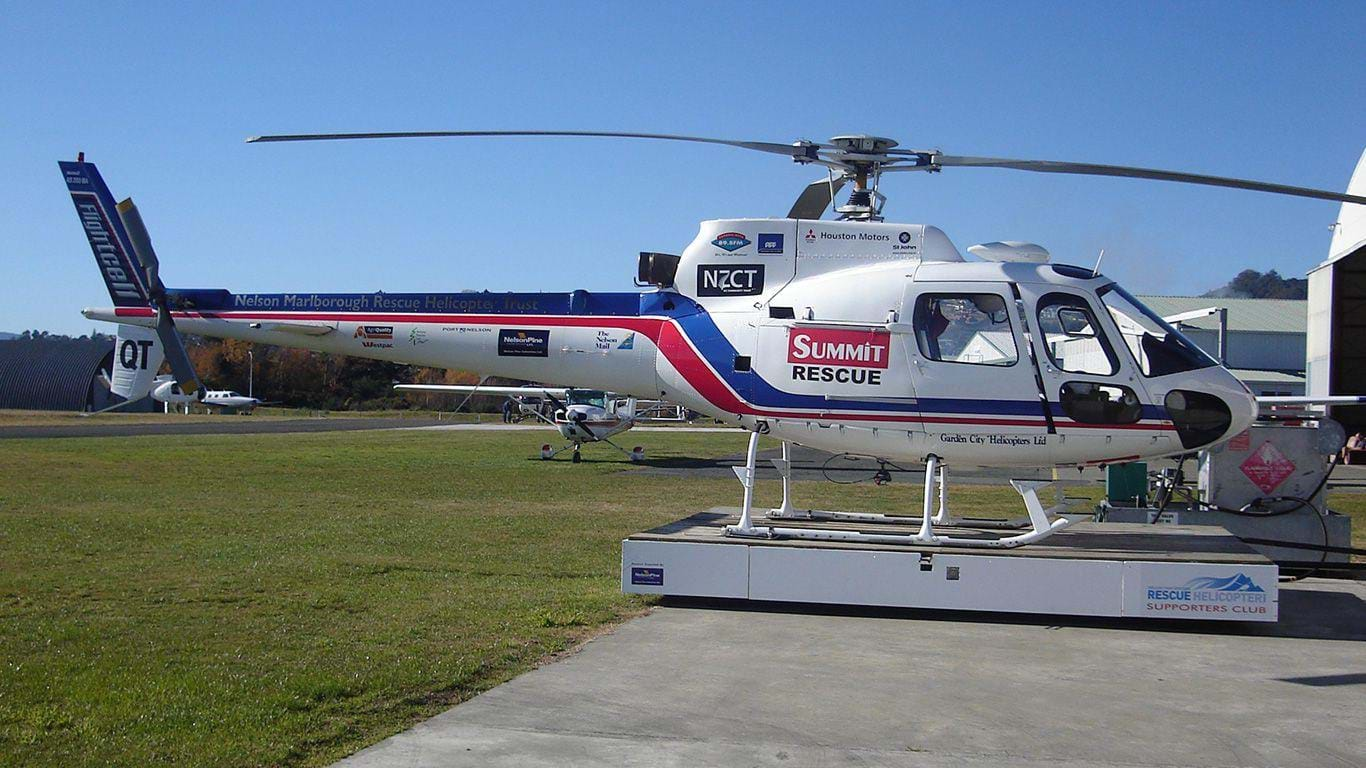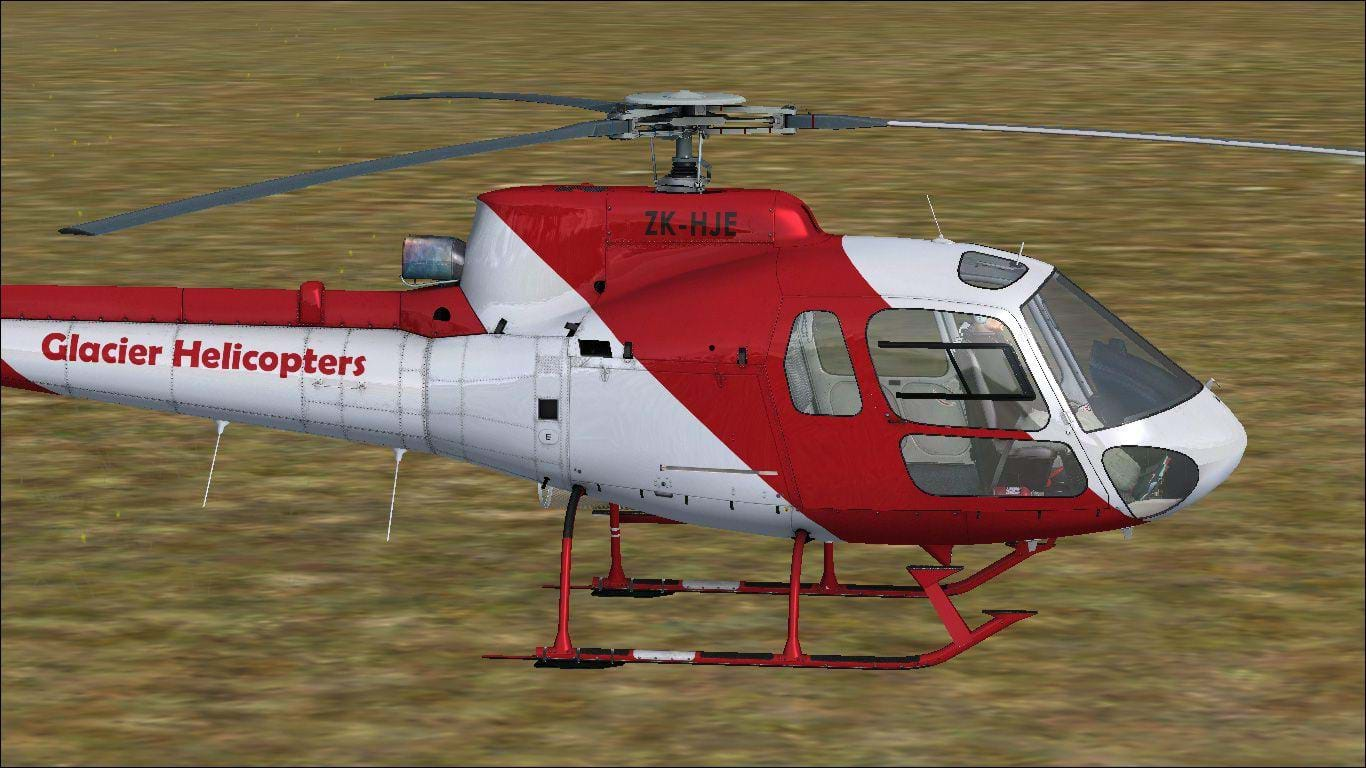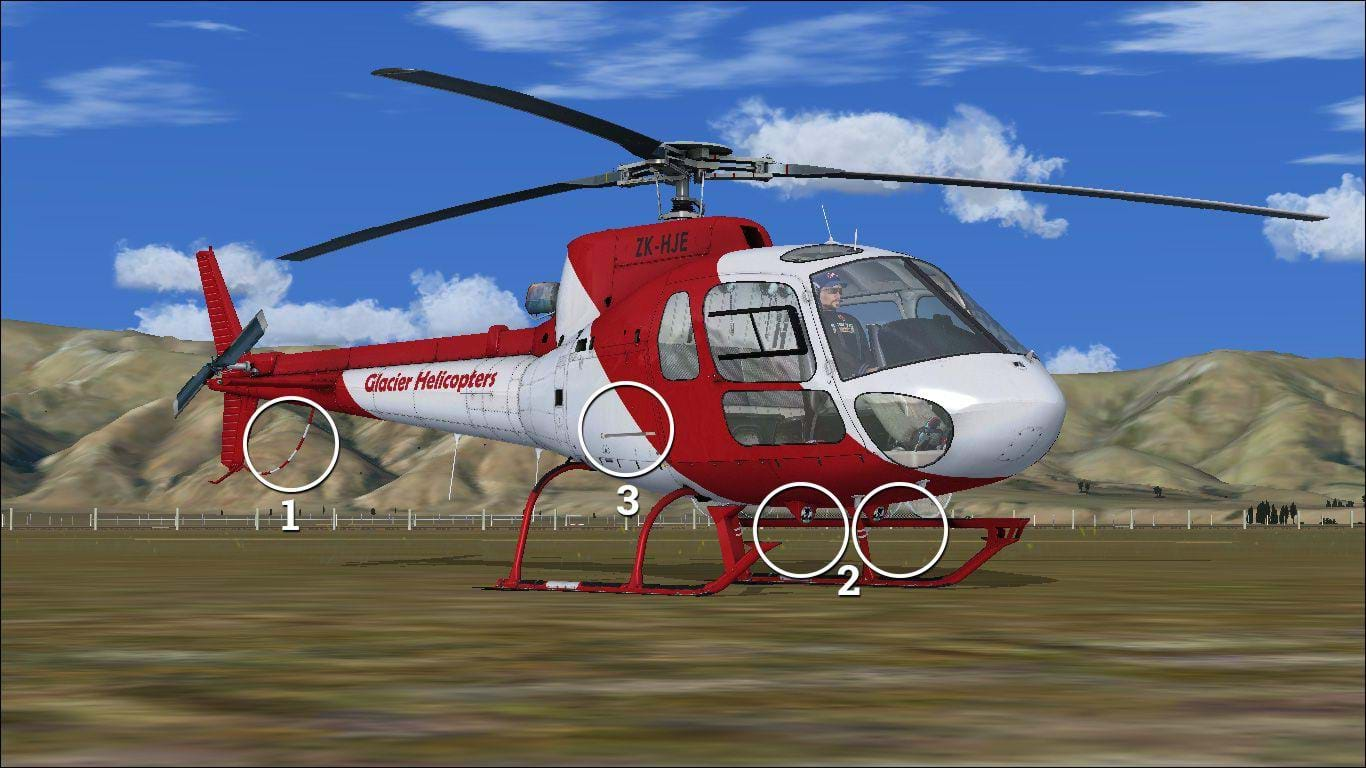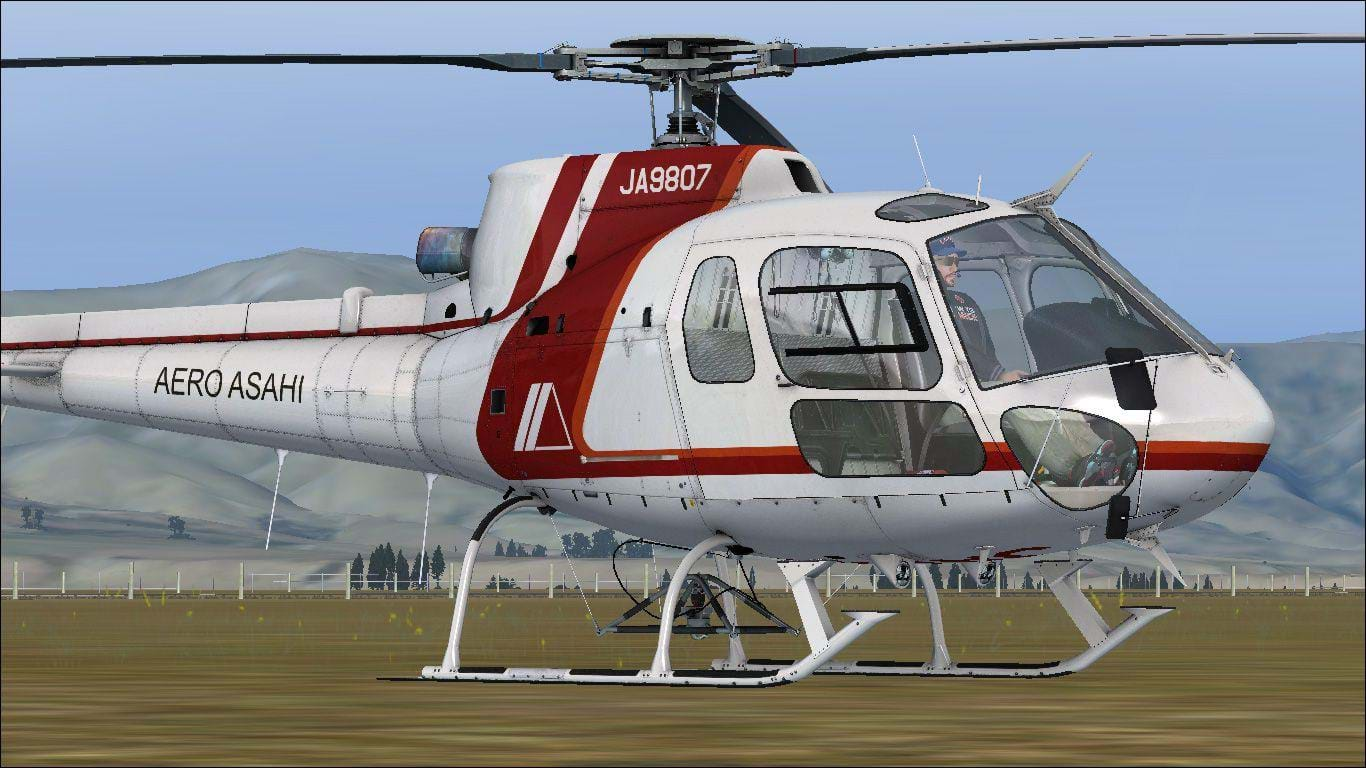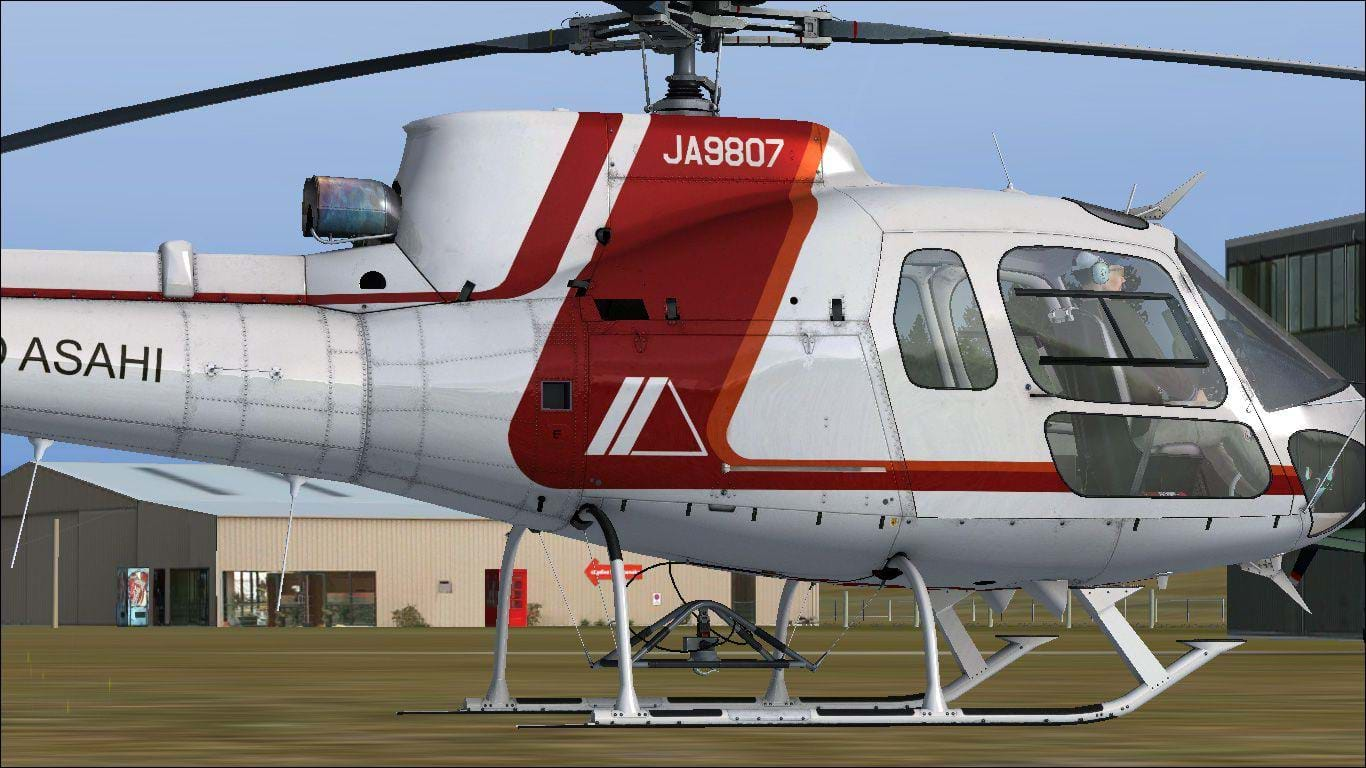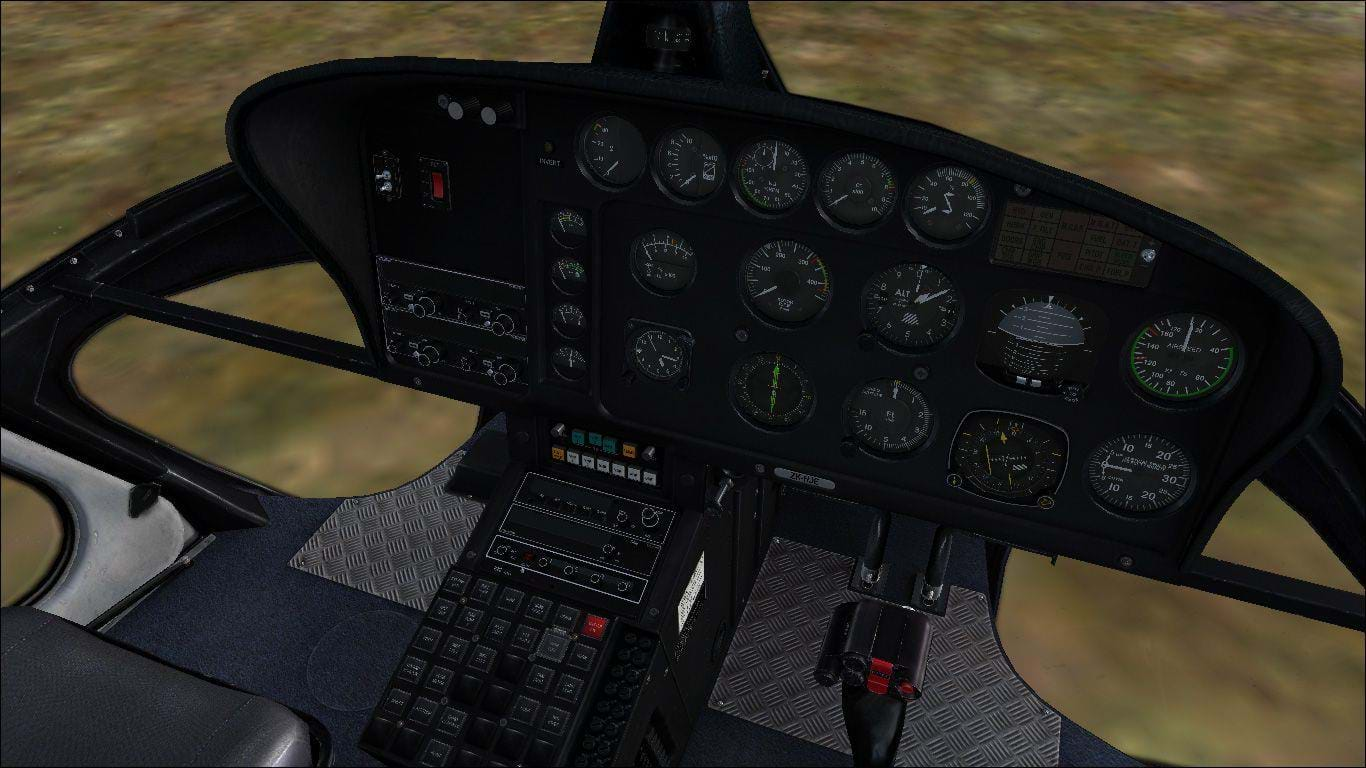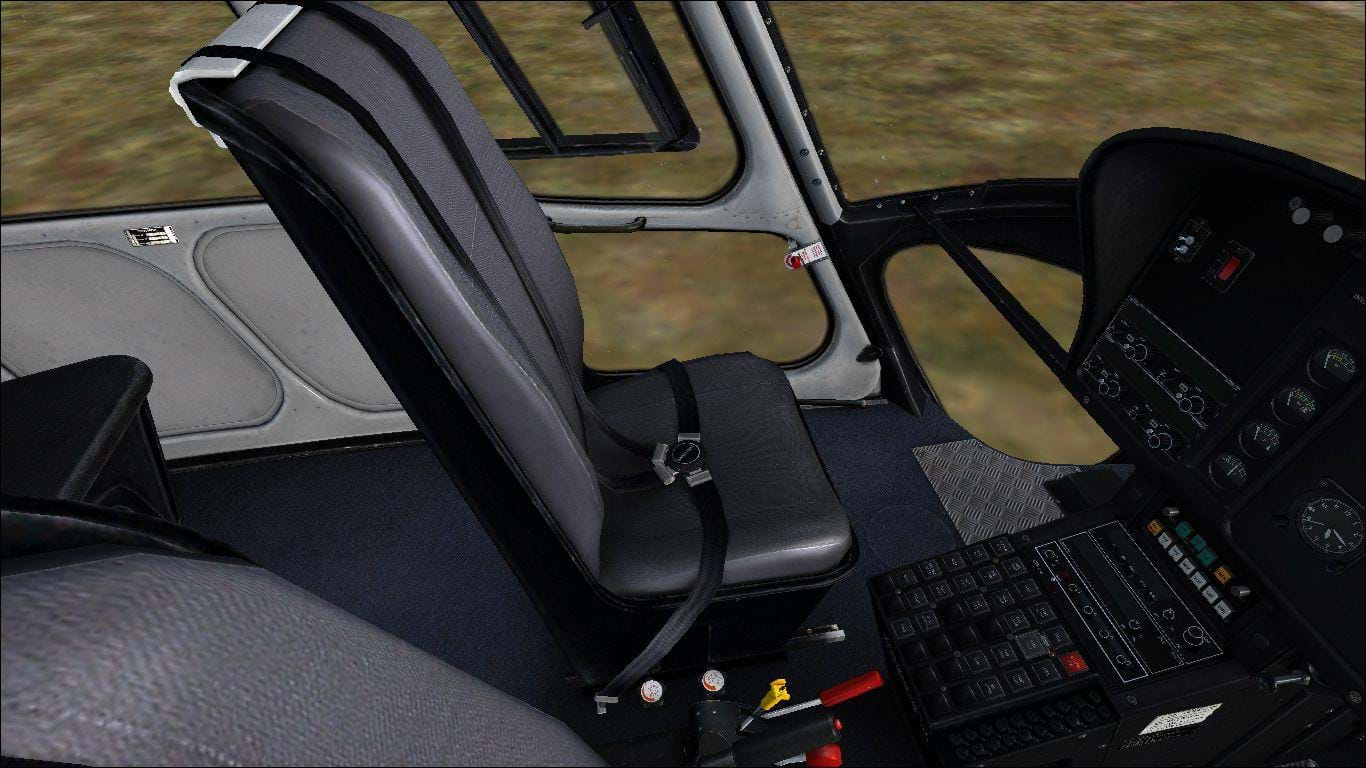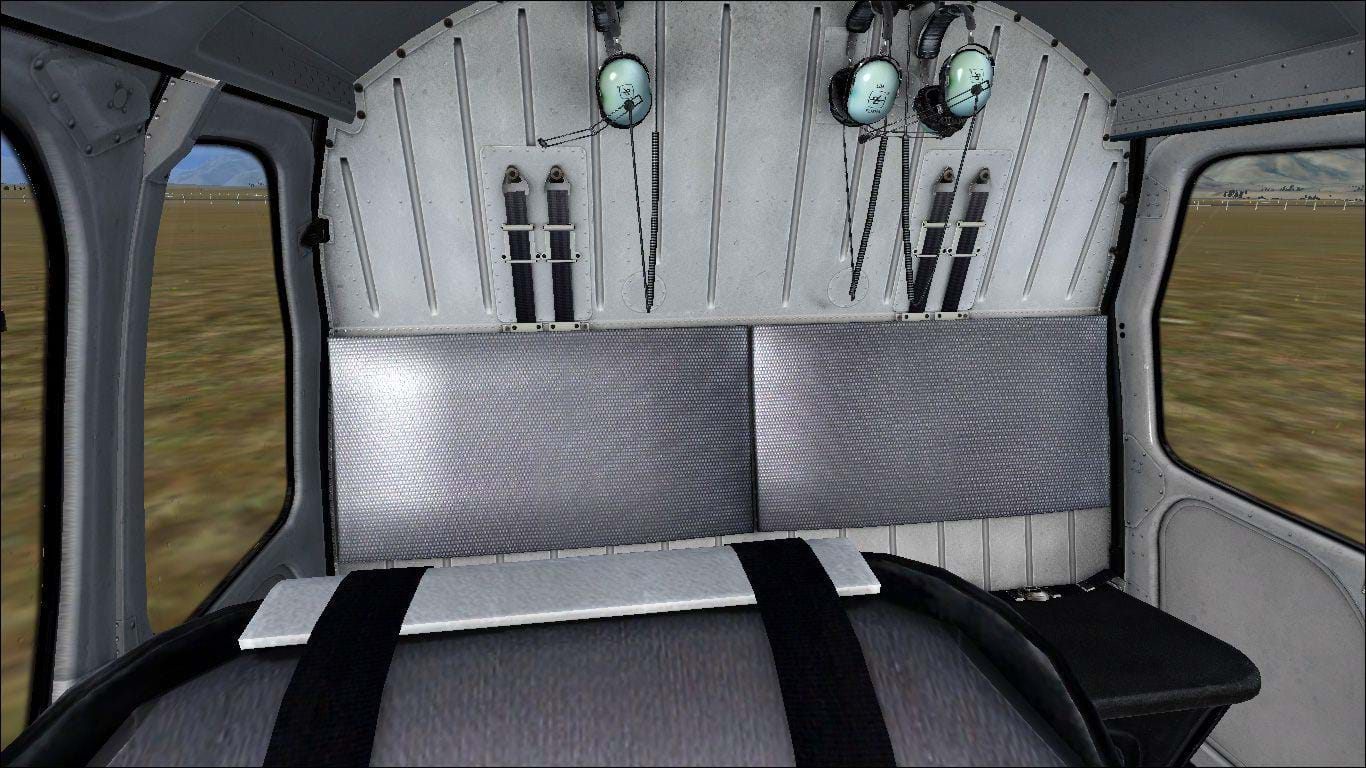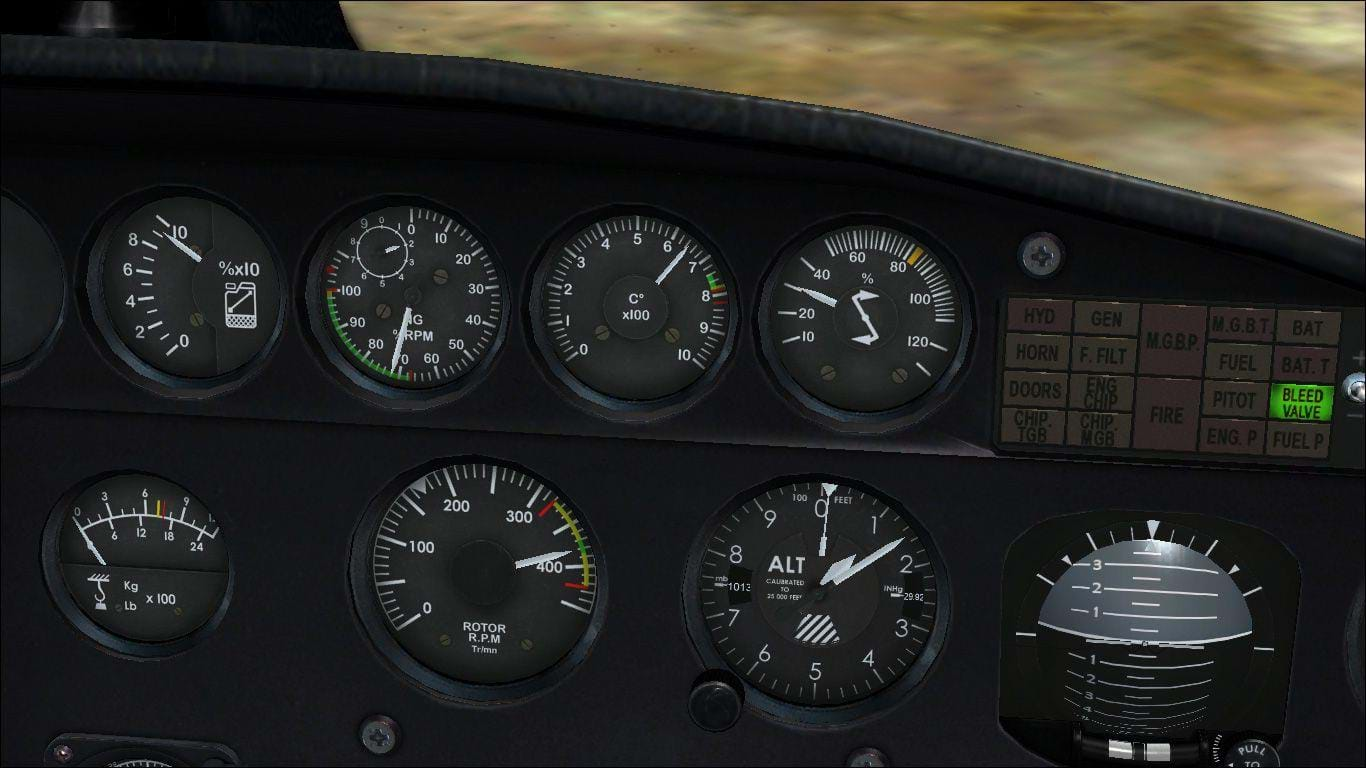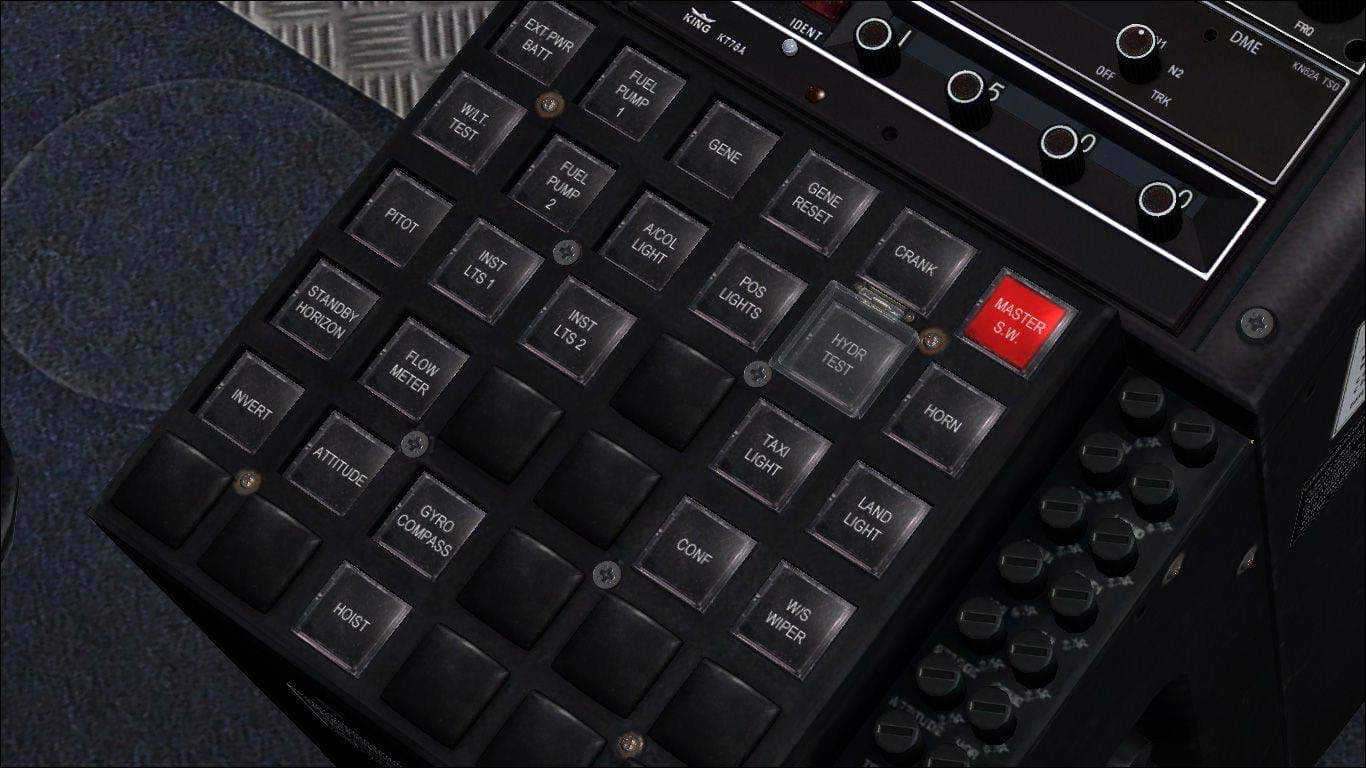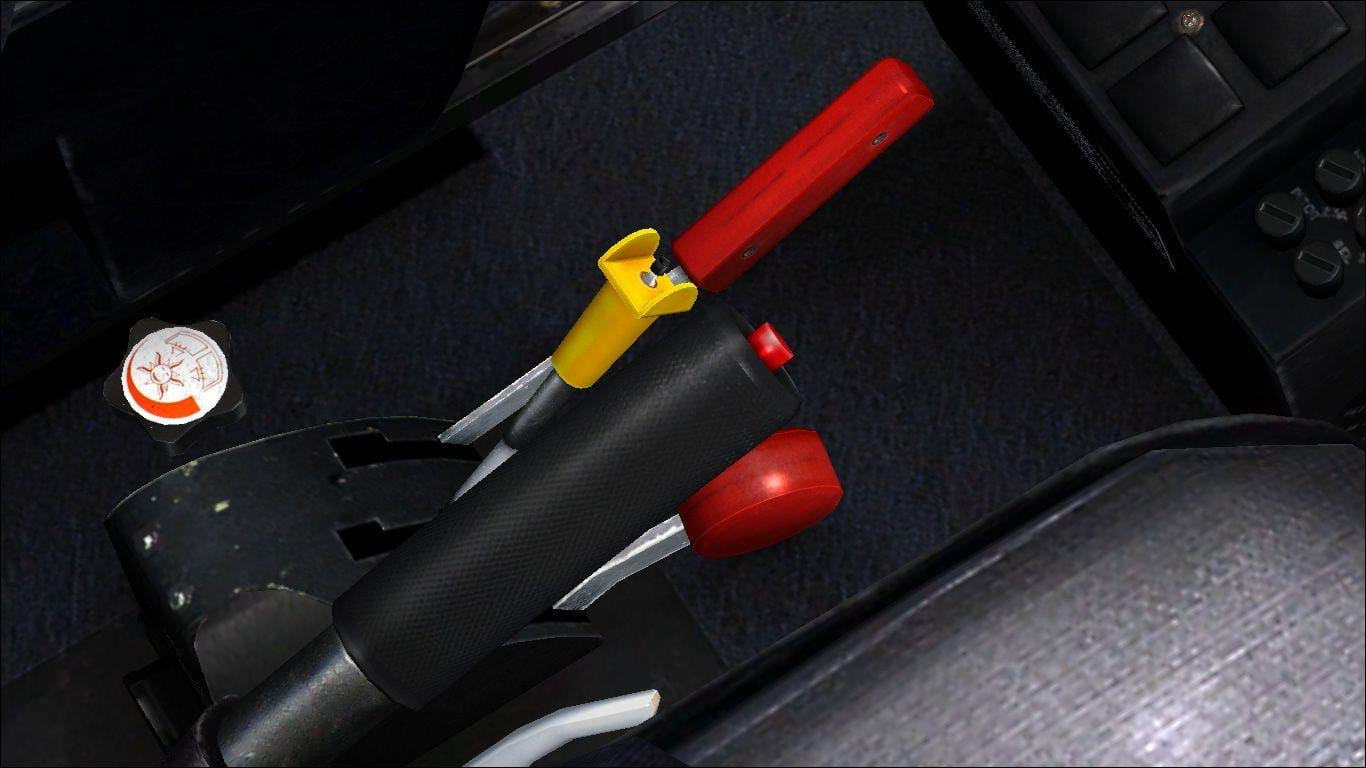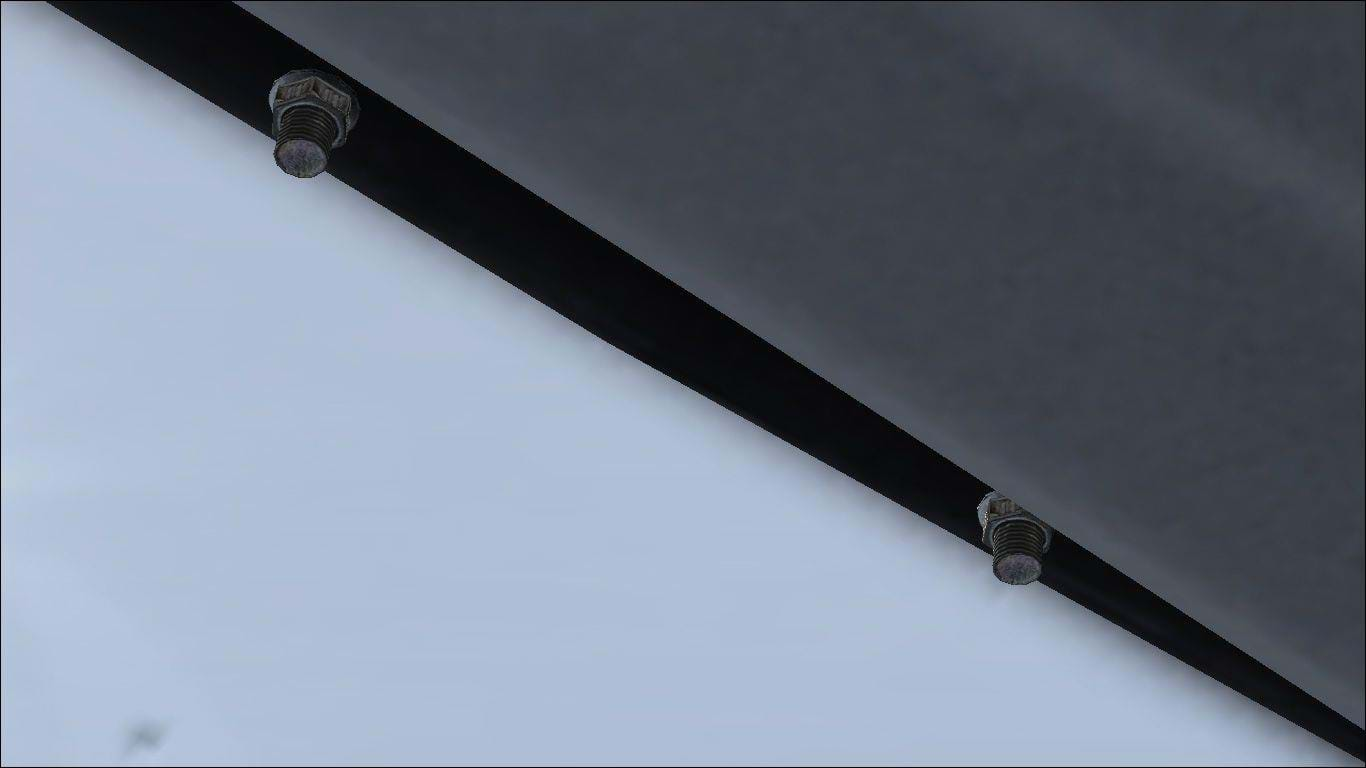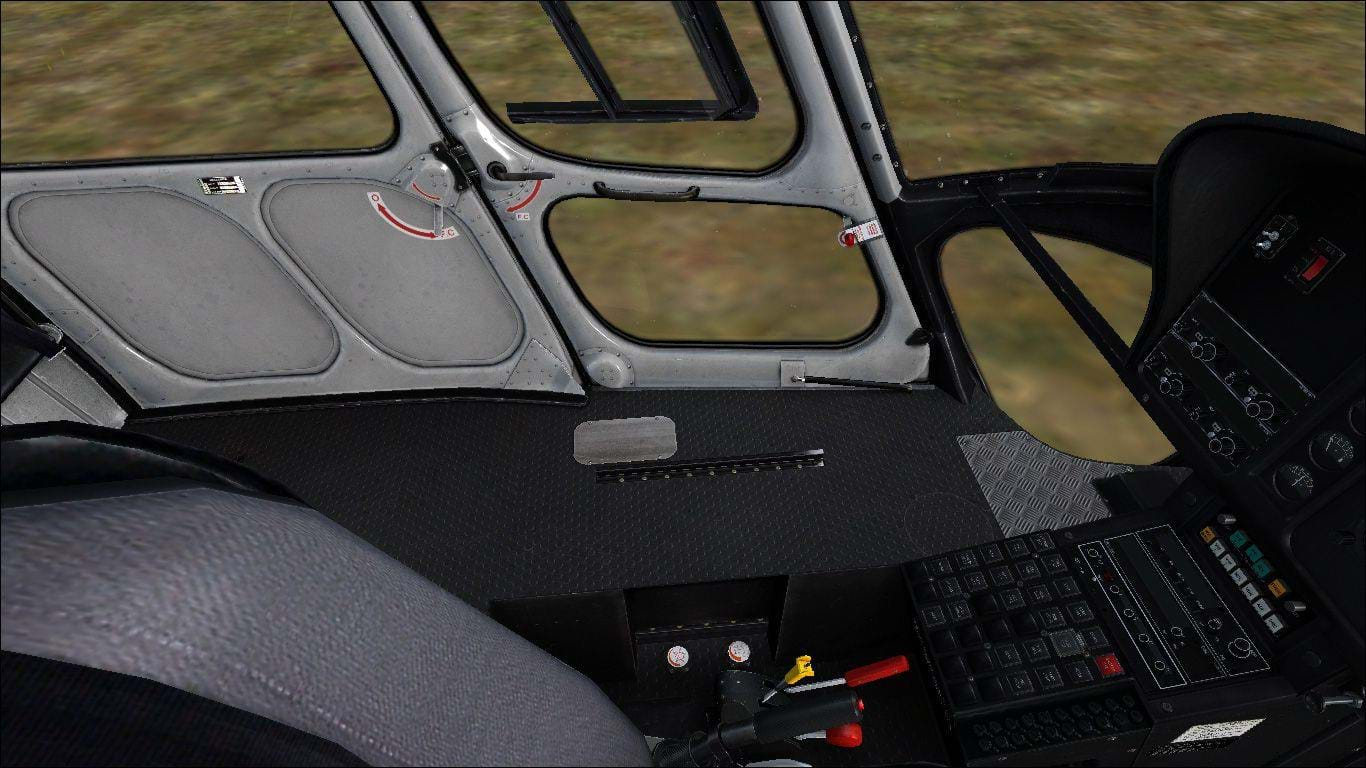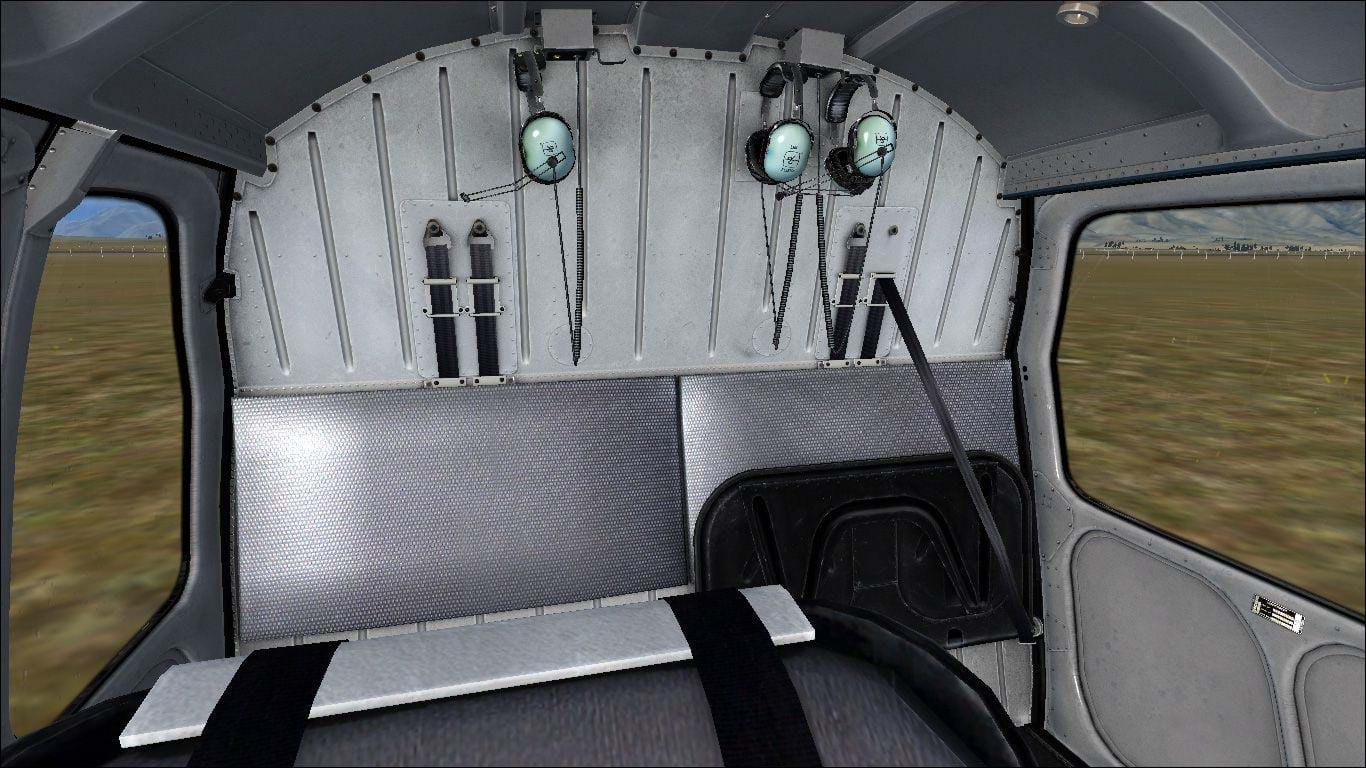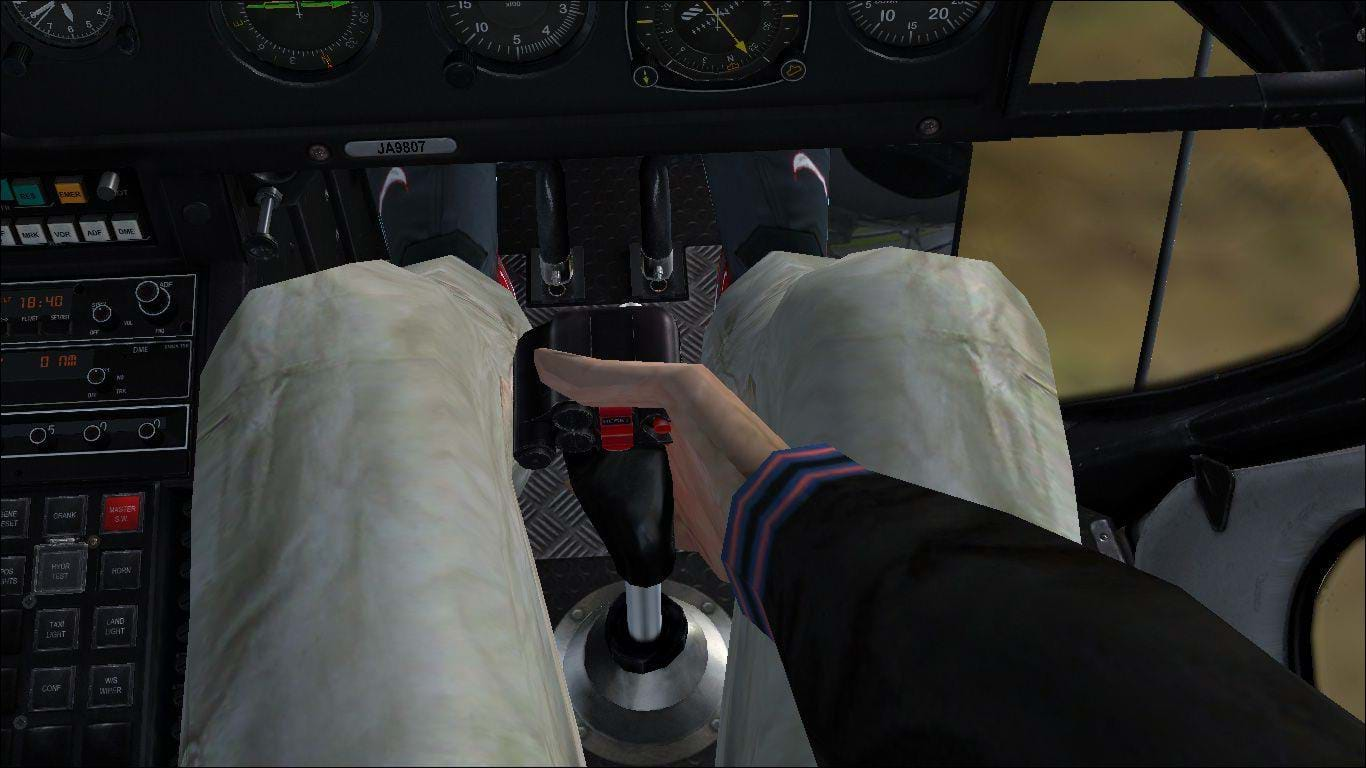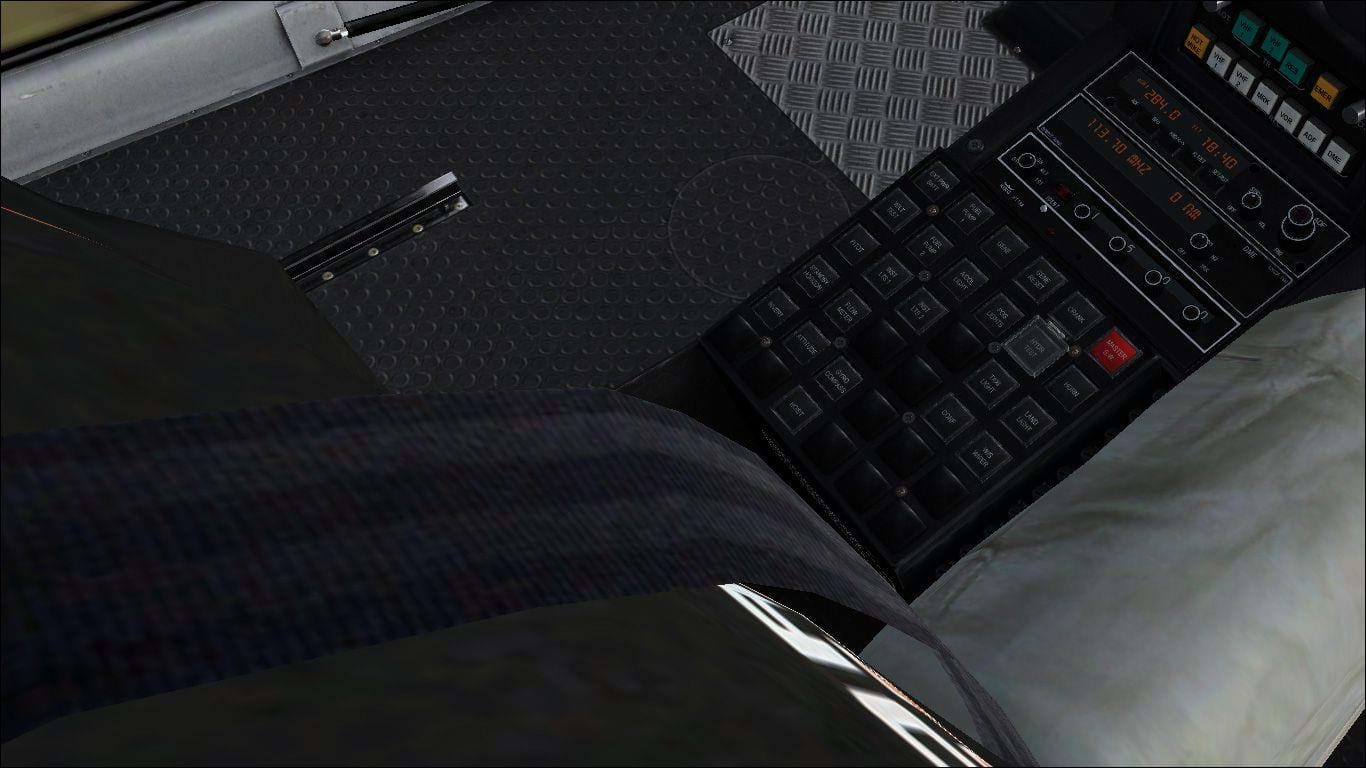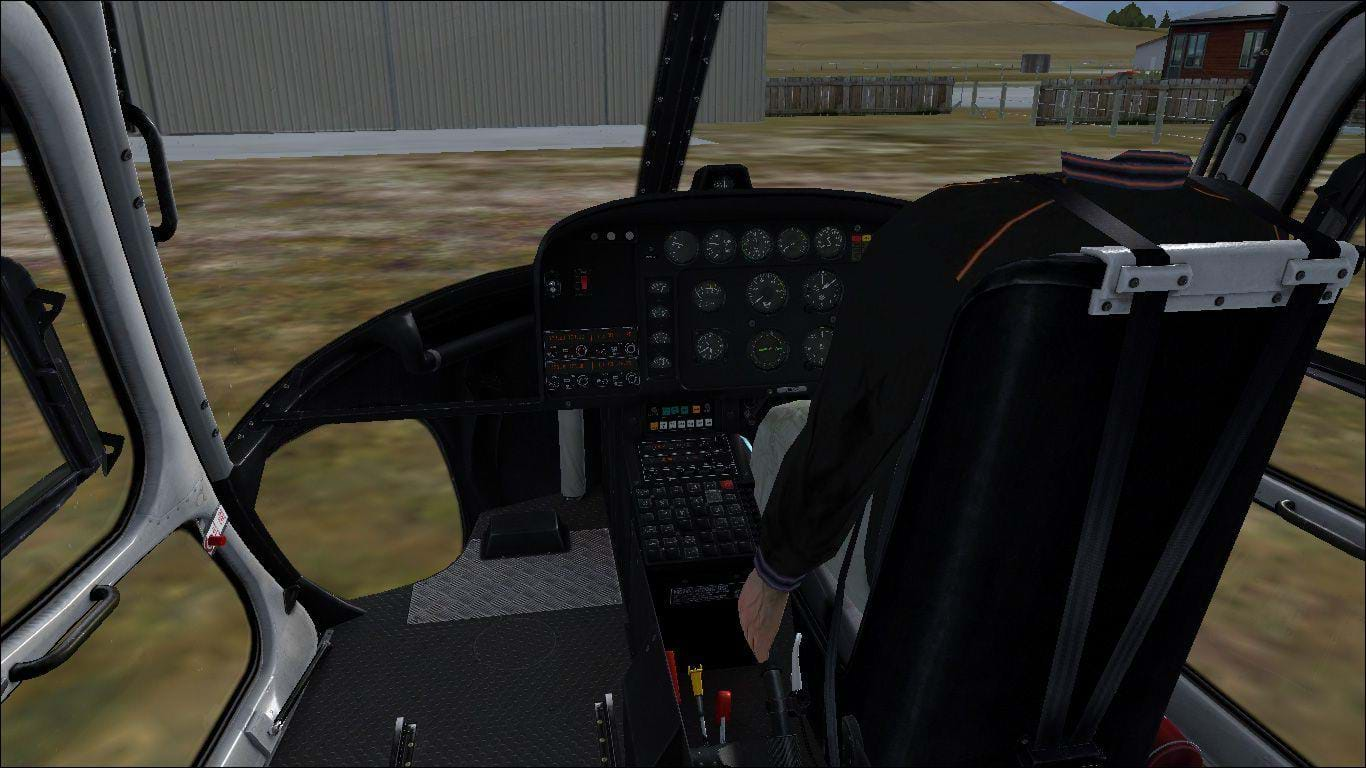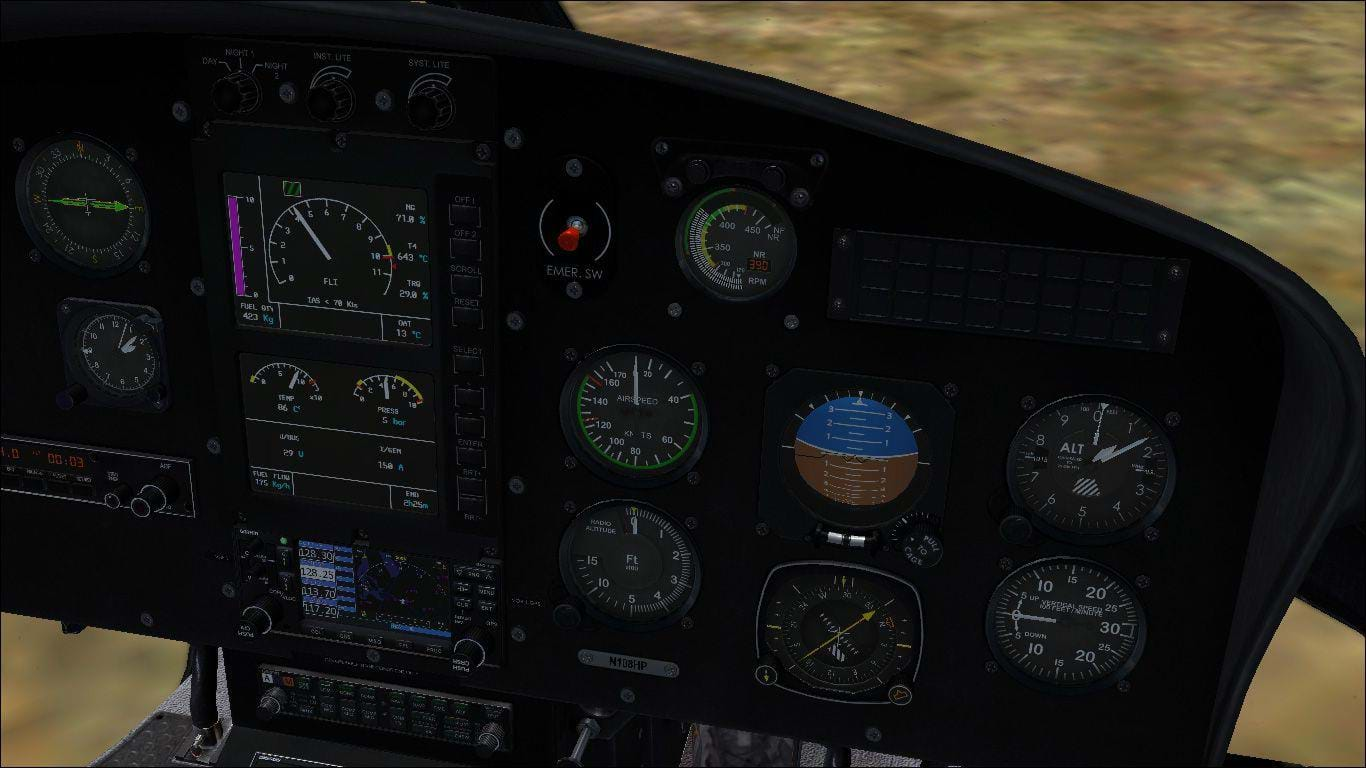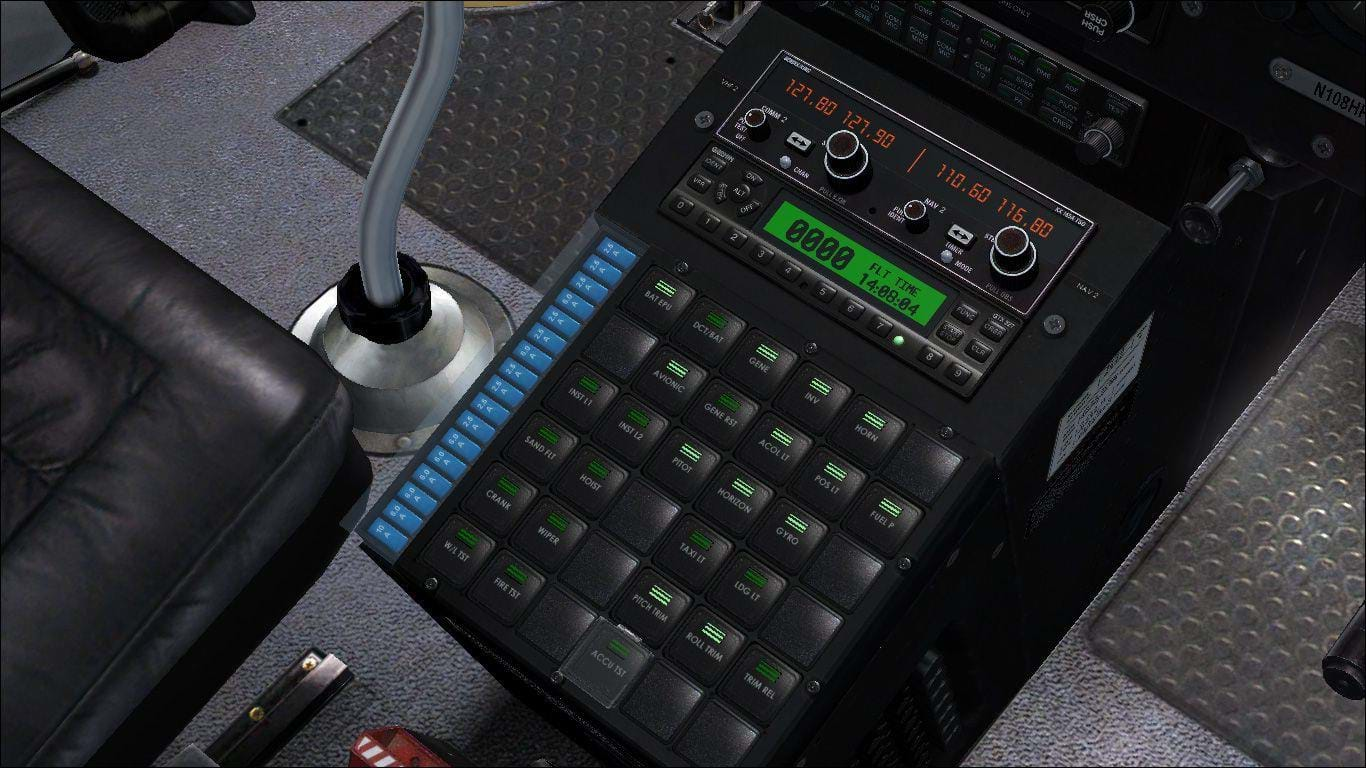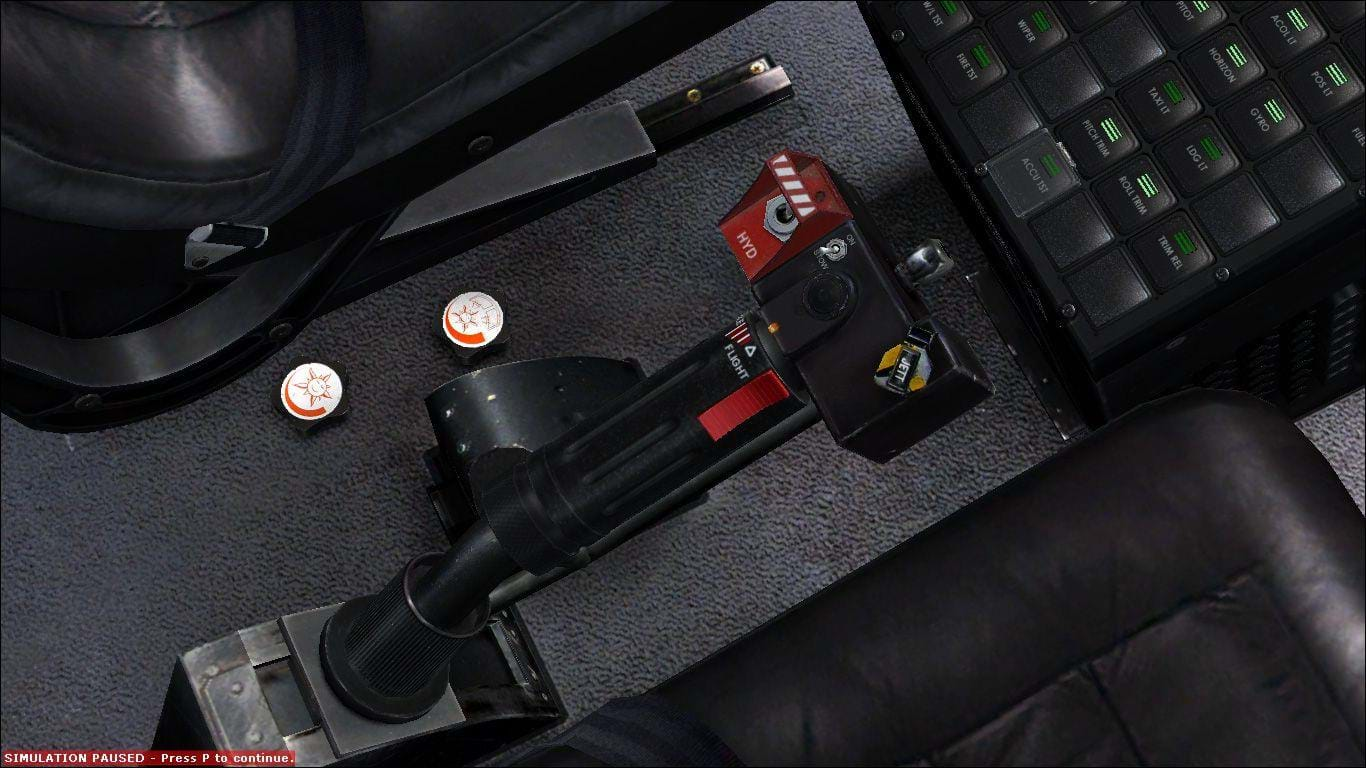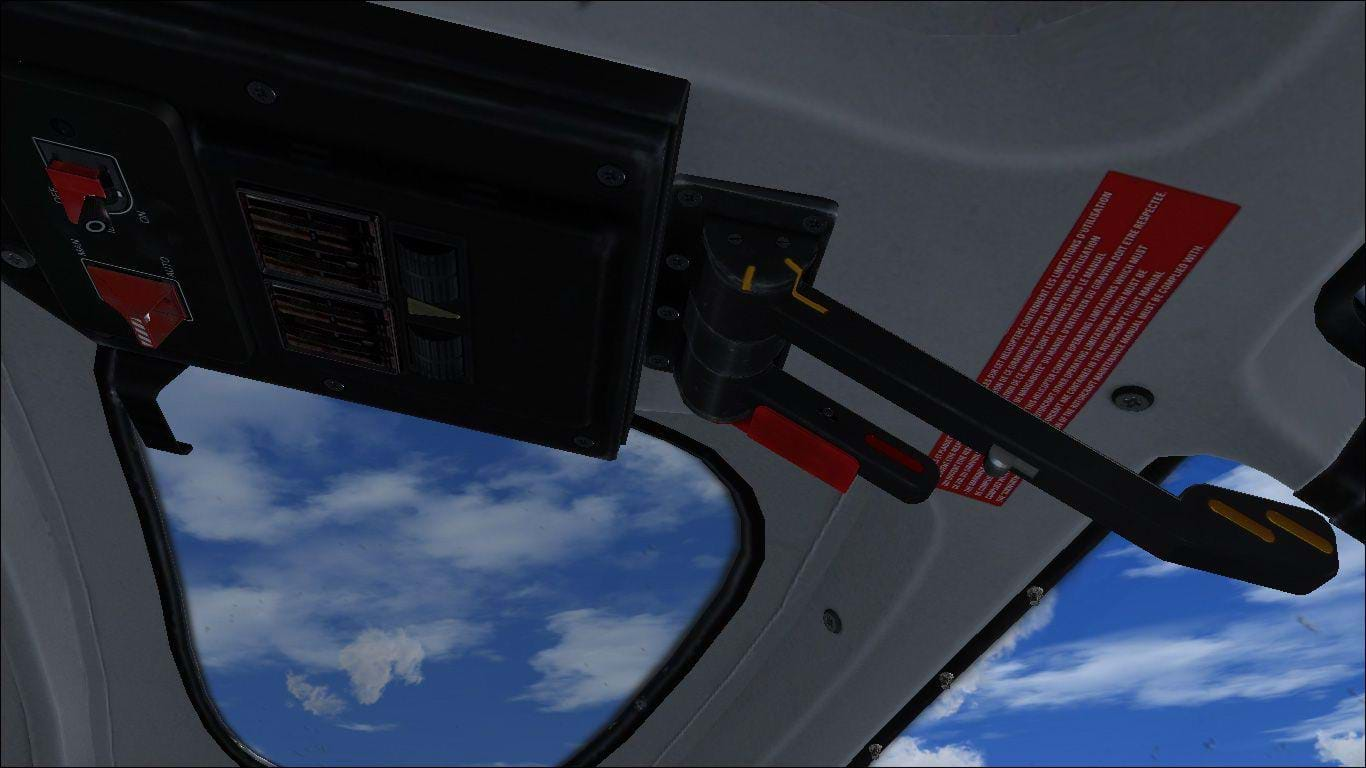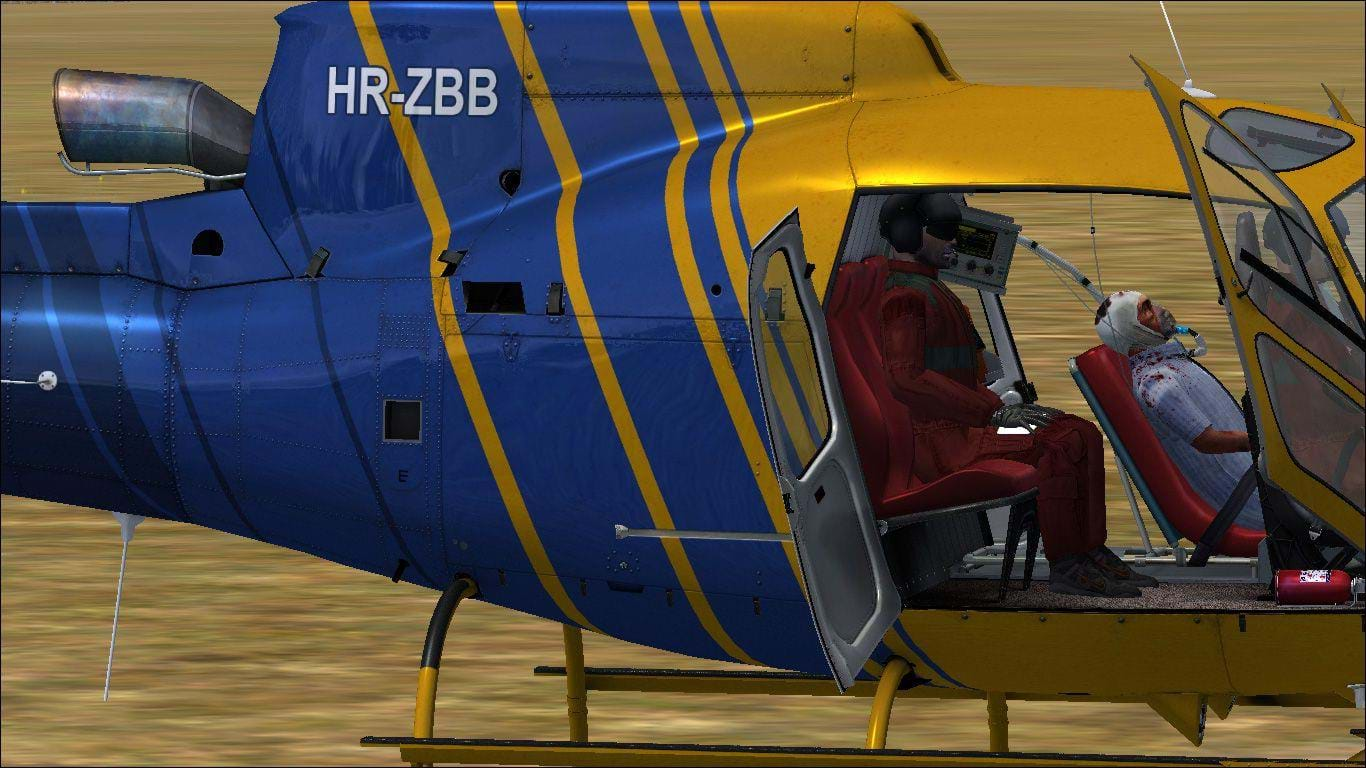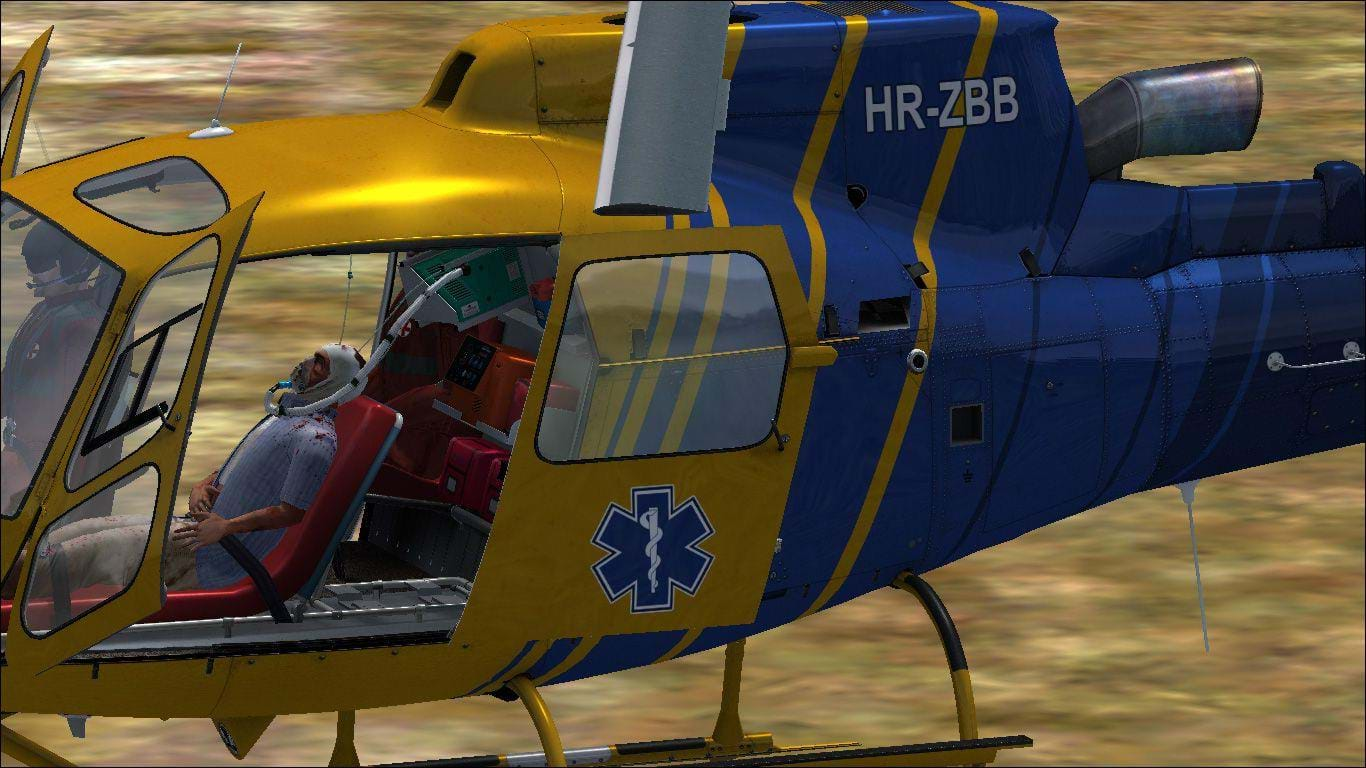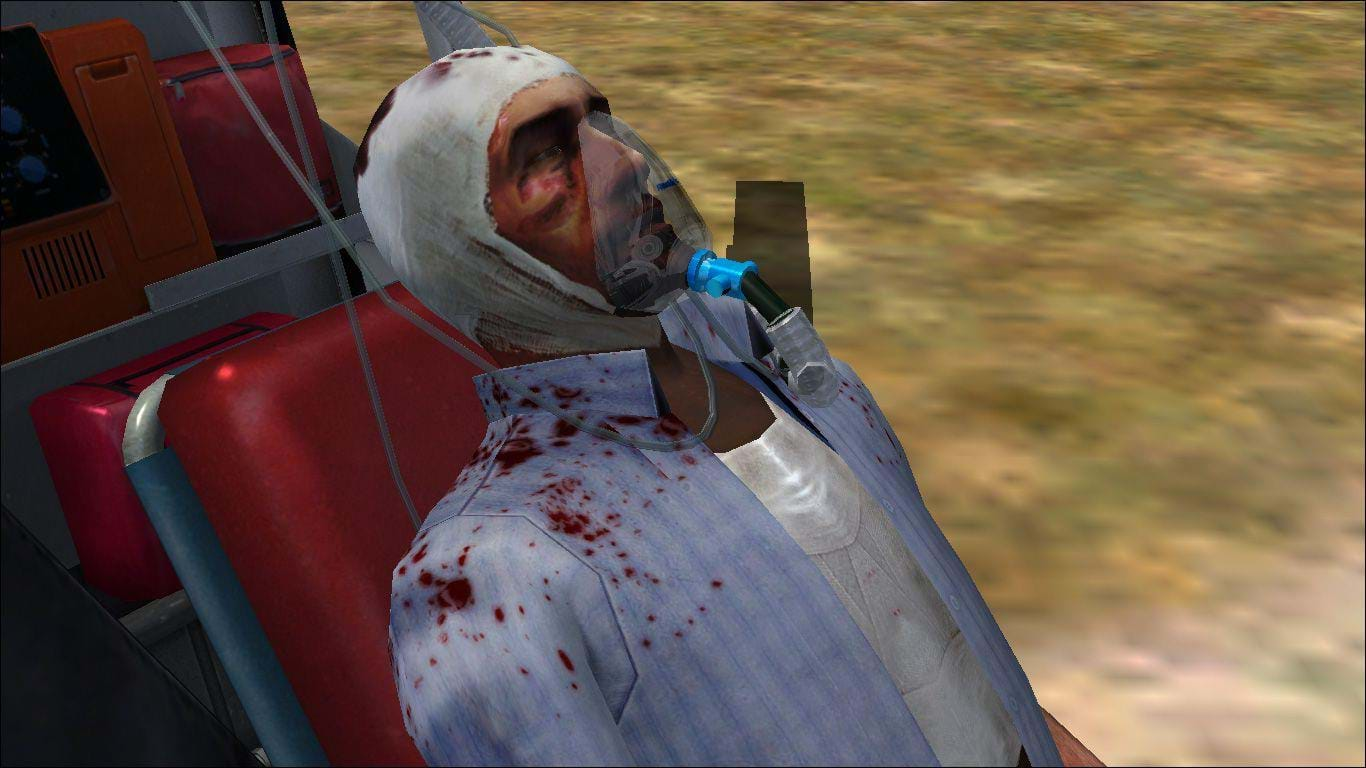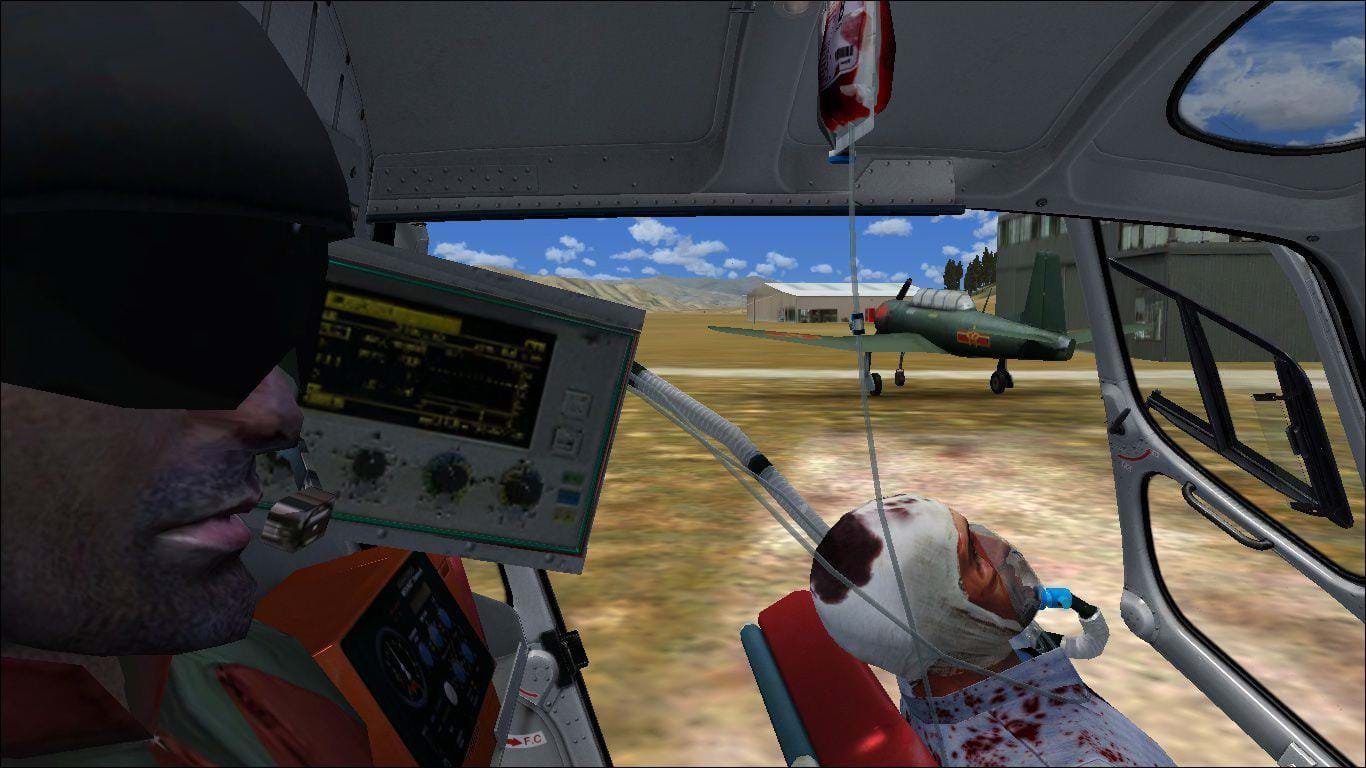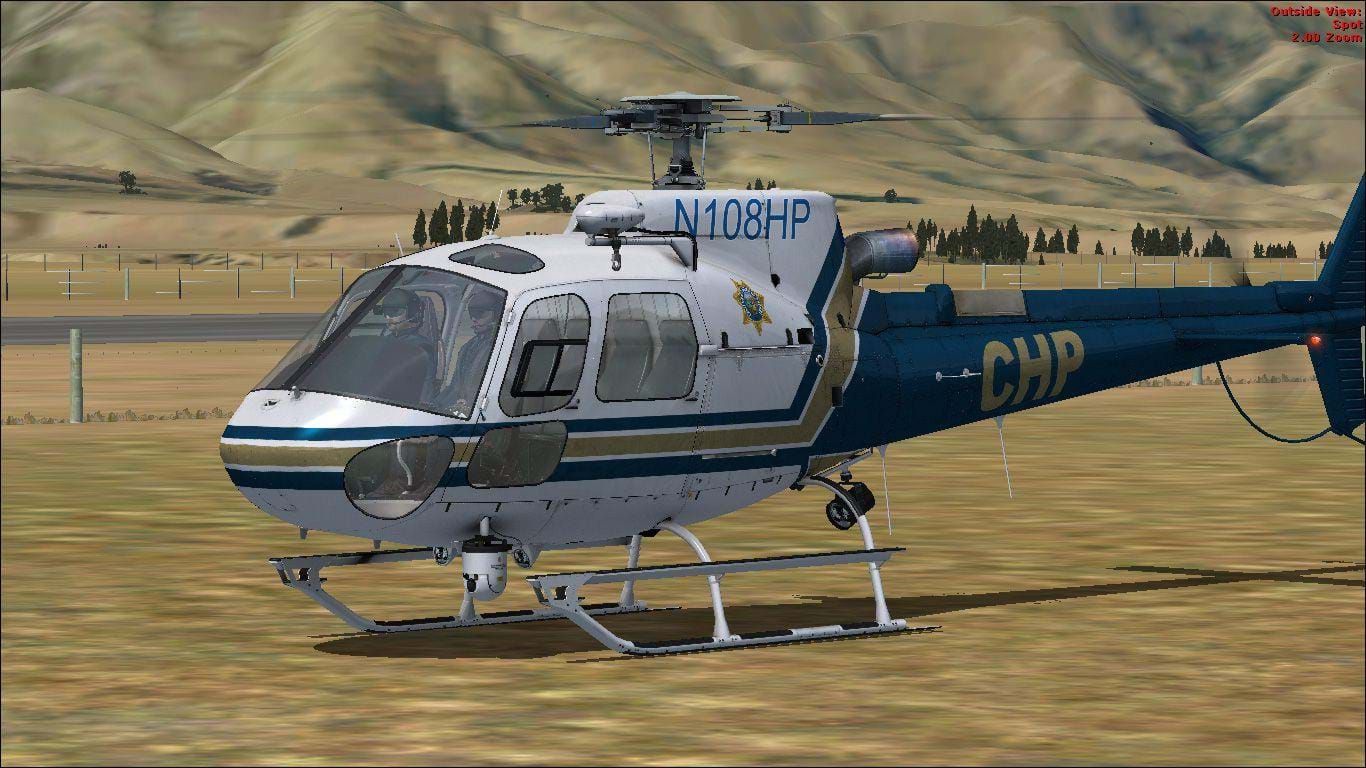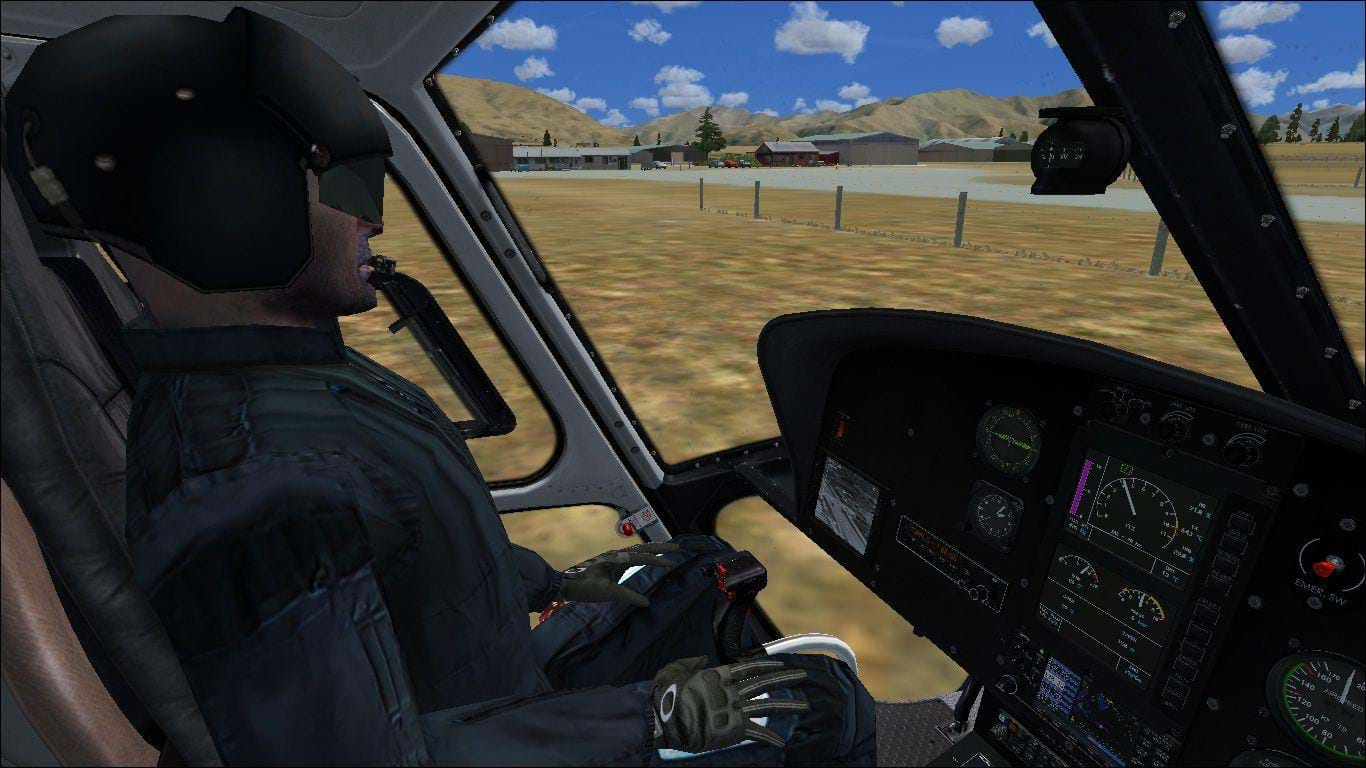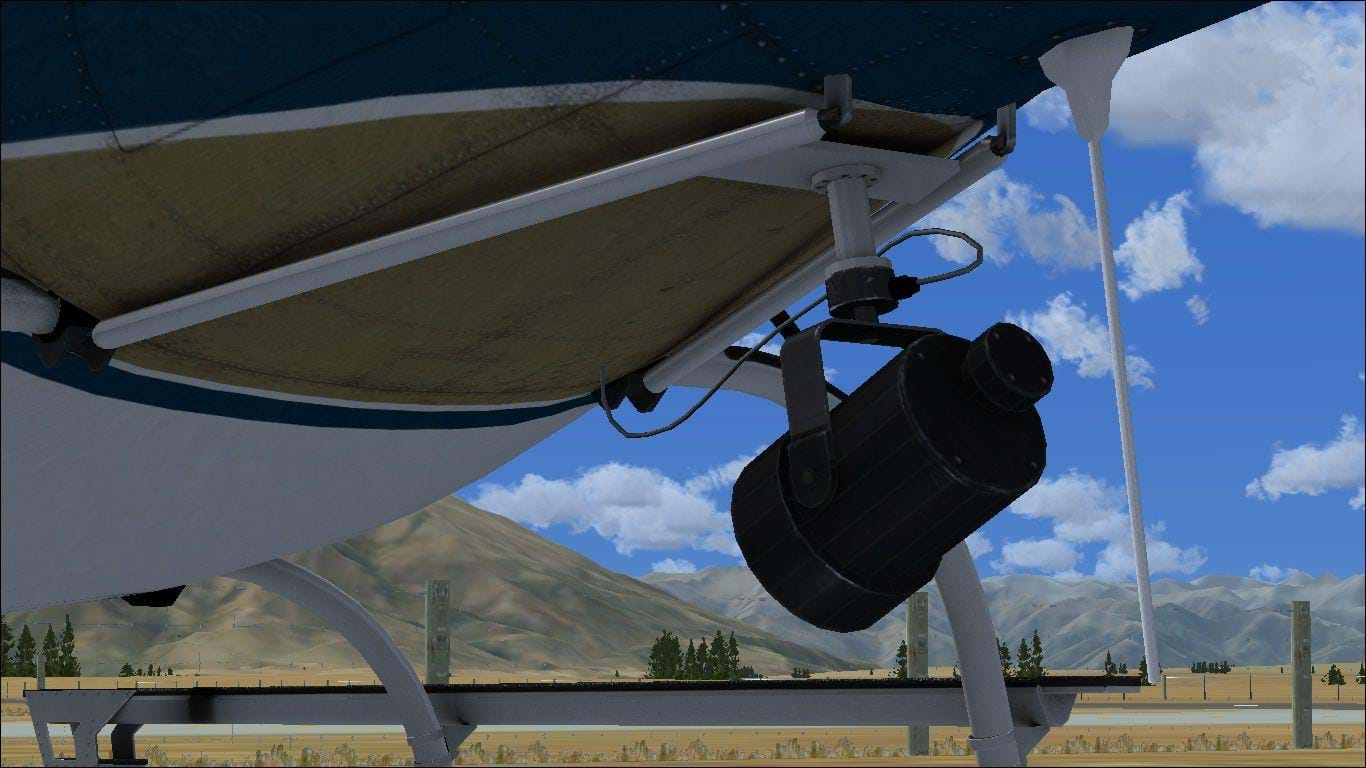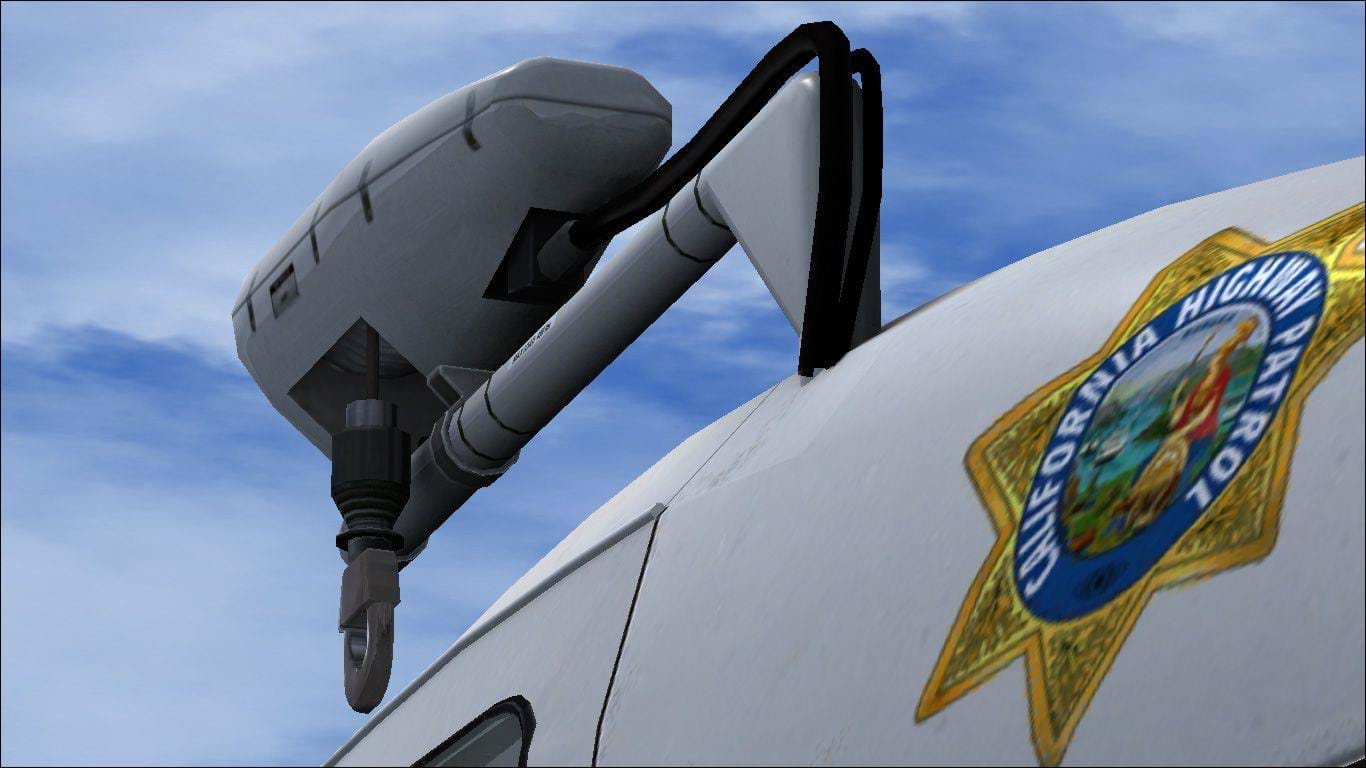Program History of the AS350
In the early 1970s, Aerospatiale in France decided to have a crack at breaking into the light helicopter market, dominated then by the Hughes 500 and Bell 206 five seaters. The design was supposed to have an emphasis on a simple construction and low cost maintenance. For the rotor head, the new ‘Star Flex’ glass fibre head was installed. Having first been used on the SA360 Dauphin only a few years earlier, the new head was to go on to revolutionise rotor head design. With only around 70 parts, it was light, simple and strong. The first AS350 ‘Ecureuil’ flew in June 1974 with a 592 SHP Lycoming LTS101 and a second prototype flew shortly afterwards with a 641 SHP Turbomeca Arriel IB engine.
In October 1977, the type certification was received and the ‘Ecureuil’ (Squirrel) went into production. For the American market, the LTS101 engine was retained and was shipped as the AS350C ‘A-Star’. For the rest of the world, the AS350B ‘Squirrel’ rolled off the line with the Arriel IB engine. Initially, the Lycoming suffered from poor reliability, leading to the A-Star being called ‘Falling Star’ however, subsequent modifications have made the type exceptionally reliable. In fact, the type is so well entrenched in the US, it is now the preferred choice for law enforcement and government agencies, having beat out MD Helicopters on purchase price and maintenance costs.
The initial Arriel powered ‘B’ model aircraft were superseded by the ‘BA’ which took the slightly modified Star Flex from the new AS355 ‘Twin Squirrel’ and increased the AUW from 4300 LBS to 4630 LBS. One of the models to be discussed here, the ‘B1’, fitted the more powerful 684 SHP Arriel ID engine and increased the AUW to 4850 LBS. The ‘B2’ model fitted a yet more powerful 732 SHP Arriel ID-I engine and increased the AUW to 4961 LBS. The most recent incarnation, and the other model that will be discussed here, is the ‘B3’ with a FADEC (Full Authority Digital Engine) controlled 847 SHP Arriel 2B engine.
Here’s where things get even more complicated. In 1992, Aerospatiale merged with MBB to form Eurocopter. Eurocopter as a company produced everything from the BO105 to the Squirrel and into the EC120, 130 and on into bigger machines like the EC225 ‘Puma’. In early 2014, Airbus acquired Eurocopter and changed all the numbering. I’m still catching up with this but I do know that the official designation for the Squirrel now is the H125… go figure.
The Nemeth AS350
This model from renowned developer Nemeth Designs dates back to 2011 and is in its final form. My time in the real aircraft is limited to the ‘B’ model; however the B1 is almost identical aside from the rotor head and engine power, neither of which should make much of a difference here. As a result most of the review will be based on the B1 with a section dedicated to the B3.
Nemeth’s choice to model the B1 and B3 is a somewhat puzzling one. Certainly in this part of the world (Australasia) I can’t find any evidence of B1s in service and anybody I ask is surprised to even find out that the B1 exists. Currently in New Zealand, there are six ‘B’ models, 45 ‘BA’s, 79 ‘B2’s and 20 ‘B3’s. The numbers in Australia seem to reflect proportionally more ‘BA’s.
Download and Installation (FSX)
The compressed file is 496MB and the two patches (a really good idea to download these) are small (under 1MB and 1.3MB). In addition, there are two FD patches which are optional. One thing to note here though is that if you install the different flight dynamics and then want to revert to the original, you have to uninstall everything and start again. This is a pain in the behind if you’re trying to work out which you like best. I’ll talk about these flight dynamics later. Uncompressed, the ‘Simobjects’ folders (there are four) come to a little over 1.3GB containing six different models, 11 different liveries and five different cabins. Installation is relatively painless. The only thing that is a bit of a nuisance is installing the FD patches requires entering the registration key again. Interestingly, it’s only the FD patches; the other ones go straight in. I know that developers have issues with pirates but it’s still a pain.
Model and Textures
This is the first Nemeth add-on I’ve had a play around with and I must say it is a pretty looking helicopter.
All the little details are present. The engine cowl and baggage compartment latches are modelled, not just textured on. It really looks great.
A slight texture problem under the aerodynamic disc on the rotor head but really nice detail otherwise. Blades are colour coded and the blade pins are present. One little detail that’s missing is that the pitch links are supposed to be colour coded the same as the blades. No big deal though. The collective moves the swash plates but the cyclic doesn’t
Nice texturing on the Star Flex. Very much looks like the real thing.
Tail rotor system looks really good and has little details like the manufacturers stamps. Everything moves as it should and I have to say, I’m a bit of a fan of the animations.
Unfortunately, there are some issues….
Apologies for the poor photo, but it’s the only one I have that illustrates the point. The nose on Nemeth’s Squirrel is a little bit too stubby. It should follow the line of the windscreen all the way down. I also think that the top of the cabin is a little bit too curved and as a result, the ‘dogbox’ is a little too small. I’ve just noticed as I’m typing this, that the rotor head sits a little bit too far down. The biggest error that I have noticed though is that the aerodynamic disc that sits on top of the rotor head is too big. If it’s not immediately obvious in those two photos, here’s another screen shot.
There are a couple of interesting choices on the externals. These aren’t necessarily wrong but they aren’t prototypical.
- The tail rotor ‘candy cane’. I don’t think I’ve ever seen one of these in real life. A browse through photos on the internet suggests that it might be an A-Star thing. Even then though, it isn’t on all of them.
- Belly mounted landing lights. Most AS350s have a landing light in the nose but Nemeth’s one has a dual belly mount. I can’t find any information on this but it appears to be an aftermarket mod.
- Sliding door rails. There are a few different door combinations that you can get for the Squirrel. Quite often on one side, there will be a small door and a larger sliding door. The other main combination is that which Nemeth’s has on the pilots side of a bigger ‘pilots’ door and a small door that opens the opposite way. It’s possible yet unlikely that the sliding door rails would be present in this configuration.
There are three different models for the B1. The B3 has EMS and law enforcement models but more on that later. The one in the above screenshots is for the passenger with a litter on one side. The other two are identical without the basket and a utility version. In the interests of time, I’ll only look at the utility version.
The utility version rips the interior out (more on this shortly) and places mirrors on the nose, a wire strike kit and a hook. It looks really good; it’s just a bit of a pity that Nemeth chose not to allow us to take the doors off for slinging.
Moving on to the interior; there are three different configurations available; transport, utility and medical. For the B1, only the transport and utility are available.
Overall, it’s very nice. No dual controls and correct single seat only in the front. Default view is a bit hard for me. I don’t use TrackIR and so I’m using the hat switch to look around. Just like in the real thing, you sit up quite high so the instruments are all below you. When I use this in the sim, I zoom out to 0.5. This way, I can at least see the engine instruments and see outside. The panel one of the most immersive I’ve seen. It’s really very nice. It would have been even nicer to have a collective lock. It’s a pretty typical thing to have on a Squirrel.
A few square edges on the instruments but only noticeable when zoomed in. All of the push buttons on the centre console work although not all of them affect the systems (more on this later). The engine controls look really sharp too.
Little details like the screws around the windscreen really help with the atmosphere.
On the Utility variant, there are a couple of differences.
Front seat removed, box installed around the engine controls (this should really be on both of them) and rear seats folded up. One of the slight issues on this version with the mirrors is that the image in the mirrors is of a Squirrel sitting on the ground…. even when you’re flying. No big deal though.
There is one more option for the interior and it’s one that I’ve often thought about. You can select a model that shows the pilot in the VC view.
It’s quite well modelled and it’s certainly better than I’ve seen before. The only real problem is that it obscures the engine controls. Once you’re up and running though, it’s perfectly acceptable. Unfortunately, this means that you get a lot of double ups on your ‘Select Aircraft’ menu. Editing the aircraft.cfg can cut out the ones you don’t want though.
Switching to another VC position however, reveals that you’ve lost your head…
Overall, apart from the incorrect shape of the nose, the aerodynamic disc on the rotor head being too big and a couple of other small things, it’s definitely the best representation of a Squirrel in Flight Simulator.
Systems
The Squirrel isn’t a simple aircraft by comparison to the MD530 that I reviewed a few weeks ago. Any payware add-on is going to have to be quite in depth to do the aircraft justice. Bringing the electrical system online is a case of pressing the EXT PWR / BATT switch. There is the option to use external power via a 2d panel. there’s no GPU visible, it’s just a 2d panel. However, I can’t get it to start with this plugged in. When it is selected, the cockpit seems to come alive and the battery light illuminates but the battery sounds stop and it doesn’t start. The GENE RESET and CRANK button don’t seem to do anything but the Master Switch cuts everything off like it’s supposed to. The dual fuel pumps make the ‘FUEL P’ light go out on the C/W panel and the Warning Light Test button does just that. The guarded Hydraulic Test button brings up the Hydraulic light and the Horn button brings up the Horn light. All the lighting switches work as do the avionics and gyro power buttons.
Starting is more complex than other helicopters but it still only takes a few steps. Battery, Fuel pumps and Generator on. Test warning lights and check voltage. Rotor brake and fuel shut off forward, Fuel Control lever all the way back. Push the start button on the top of the Fuel Control lever and watch the NG gauge. At 10%, move the lever forward to inject fuel. Eyes up to the temperature and modulate the fuel flow to keep it at around 700 and keep NG increasing. At 45% NG, release the starter and keep it accelerating to 70%. It takes a little bit of practise to get it smooth in real life. In the sim, it’s pretty similar except that pushing the starter doesn’t move NG at all. The sounds start but none of the gauges move. Moving the fuel control lever forward starts everything turning. You have to remember to release the starter at 45% although there are no consequences for leaving the button down. NG and temperature seem to move in direct correlation with the fuel control lever. I can’t get it to hot start at all. Ground idle should be at around 70% NG however on Nemeth’s bird, the fuel control lever has to be all the way into the flight gate before you get 70%. In short, there isn’t a lot of fluidity in the dynamics of the start. The rotor RPM sits far too high at ground idle. Realistically, it should sit around the 260 RPM mark however, in this model it is sitting in the ‘flight’ range of around 350.
The flight controls in the Squirrel are hydraulically boosted. Three servos for the main rotor head and one for the tail rotor supply boost to relieve flight loads on the controls. The hydraulic pump is belt driven off the main rotor gear box so if the blades are turning, there’s hydraulic pressure. Flight without the hydraulics is possible as the system is not fool proof. (The TV news Squirrel that was caught on camera crashing onto the roof of a building was subject to a hydraulic belt failure) There is a hydraulic test button on the panel that cuts off the pressure to the accumulators so that they aren’t being resupplied and there is a hydraulic dump button on the end of the collective that dumps the pressure. Flying with the hydraulics off doesn’t seem to have any impact at all unfortunately. In real life, it really gives you a work out trying to put it on the ground.
The avionics suite modelled is IFR capable with dual COMM and NAV radios plus DME and ADF. GPS is only provided via a 2d popup however, the B3 to be discussed later has it mounted in the panel.
The heater and demister controls are modelled however I can’t work out if they do anything or not.
The Bleed Air valve is usually open for the start, shutdown and low power manoeuvres. The point at which it closes to preserve engine power varies with temperature and altitude. On the Nemeth one however, it seems to be fixed at 93% NG. I guess in order to model things like this, would have required a huge amount of programming and may be outside of the area of expertise of the developer.
The rotor brake is modelled. However it is really ineffective at low RPM where it should be most effective. That, combined with too much inertia in the rotor system makes stopping the blades take far too long.
Overall, a bit mixed. Some really nice touches in that the push buttons for the most part do what they are supposed to but incorrect ground idle NG, very basic engine control and no hydraulic modelling is disappointing.
Sounds
The sound set for this machine is provided by Sonic Solutions and can be purchased for any other Squirrel that is around. Starting at the beginning, hitting the battery push button obviously brings the electrical system online. The noise just comes in; there is no sound of the gyros winding up. It also sounds like there is a cooling fan or something running. Unfortunately, there are no ‘ambiance’ sounds for the cockpit. No sounds for the controls, doors, sliding windows etc.
One thing that you realise really quickly when you do your training in the Squirrel is that the horn that alerts you to a hydraulic failure (and RPM), is really loud. Over the noise and with a helmet on, it still gives you a hell of a fright. Having the horn button depressed with the engine shut down and or having the hydraulics off should activate the horn. The sound pack doesn’t include this. Along with no cockpit sounds, this is very disappointing. It should have been a pretty easy thing to include.
Pushing the starter brings up the sound of the compressor starting to spin up. It’s a relatively accurate sound although I think it sounds a bit too defined. On the real thing, it sounds like it’s a long way behind you, because it is. If you aren’t sure, view some of the videos on YouTube. The blending from the starter sound and the sound at light off is a bit abrupt, I’m not sure how these sounds were recorded but it doesn’t really sound like you’re sitting inside. The thing that’s missing I think is the transmission whine that is almost there but not quite.
One of the things that the patches addressed was the interior sounds. On the base product, the sounds appear that they were recorded sitting in the aircraft in flight. Unfortunately, there is a touch of blade slap and somebody talking. Of course when the sound is looped, you hear the same pattern over and over again. Pretty poor showing for a pay ware add-on. Nemeth listened to their customers and one of the patches changed the sound. I suspect they have just shortened the file a little. It’s MUCH better now so kudos to them for that.
When idling on the ground, I think that the rotor sound is a bit severe, sort of still sounds like it’s biting the air. This is most likely due to the RPM being too high as discussed above.
The exterior sounds are really very good. The aircraft has the distinct growl with a slight whistle that the Squirrel has in real life.
The shutdown of the engine sounds about right but the noise of the blades is still too aggressive until the RPM gets really low.
Overall, it’s pretty good while you’re flying around under normal conditions. Start up and shutdown sounds are average and the lack of warning horn and cockpit ambiance sounds is really disappointing.
Flight Dynamics
This really could be an article by itself but I’ll try and keep it as short as possible here. As stated before, the Squirrel has hydraulically boosted flight controls and so any add-on is going to have to simulate this somehow. Nemeth have chosen to use the EH101 flight model as a base for the Squirrel. As most of you are aware, this shipped with the ‘Acceleration’ add-on years back and requires a light touch on the controls. This is almost perfect for the Squirrel as it is the only helicopter I have flown that has zero feedback through the cyclic. It’s important to note here that Nemeth haven’t got the weights correct for the B1. In the simulation, the model has an AUW of 4960 LBS which is actually a B2 and B3 weight. As stated before, the blades take far too long to slow down at low RPM even with the rotor brake.
There were many complaints about the use of this flight model and Nemeth once again listened to their customers and released a revised flight model based on the Bell 206. I’ll deal with each FD separately.
EH101 Flight Dynamics
Picking up into the hover shows up one of the problems with this flight model. On the ground, the pedals are almost inhibited. If you move the pedals while on the ground they return to centre. It’s a strange problem unique to the EH101 FD. Progressively adding right pedal to keep it straight seems to work but it’s not very smooth. Once you’re in the air, it’s fine. The other thing you notice is that the RPM appears to be surging. This is another thing that the EH101 model does and along with the pedal issues, it’s amazing that Microsoft let it go out like this. I’m hoping against hope that Dovetail fix it one day. The RPM surge is only apparent in the rotor RPM, not NG or temperature and although it’s obvious in the sounds, it doesn’t appear to affect the aircraft’s performance at all.
Once in the hover, it feels a lot like a Squirrel. My first take off in Nemeth’s bird was exactly like my first take off in the real thing, messy. Even with a steady hand you wobble about all over the place. Part of this is simply down to the fact that you are relying on visual and audio cues for control movements and not the seat of your pants which is how you fly in real life.
Once in the air, the amount of right pedal that you use seems correct. The Squirrel has a really efficient tail rotor and so you don’t require a lot of pedal on the take off or hover. With smooth movements you can hover taxi around quite happily.
Going through translation shows up another small problem. As the aircraft accelerates, the vertical stabiliser becomes more efficient as does the tail rotor itself and so the amount of pedal that you use should decrease. However, on Nemeth’s machine, it stays about the same. You end up flying around with right pedal in all the time which is a pain. Lowering the collective all the way to the floor only brings the ball back to centre, not out to the left like it should.
Once you’re in the cruise though, it’s very comfortable to fly. You don’t need to hold forward pressure on the stick to keep it going. For those of us who don’t have fancy helicopter controls for simming, this is perfect. It’s still very sensitive so holding height and speed requires attention but it almost flies along by itself. I think it moves around far too much in the bumps. One of the fantastic things about the Squirrel is how stable it is in turbulence. If you hit turbulence in Nemeth’s version you just about swap ends!
Trying to auto presents another problem. For a power recovery auto, bringing the fuel control lever back out of the flight gate and entering auto at the same time is difficult to start with. The bigger problem though is that once it’s out of ‘flight’ the collective and pedals get inhibited just like they are when the engine isn’t running so you end up just falling with no yaw or RPM control. Not good.
Coming in to land, it floats a little while slowing down; probably a bit too much but it isn’t terrible. The landing requires about as much finesse as the takeoff. Due to the internal flight model, it doesn’t sit right rear low like the real thing.
Bell 206 Flight Dynamics
Due to people getting up and screaming that it was uncontrollable, Nemeth released an alternate set of flight dynamics based on the default Bell 206 which is known for being quite stable.
When you’re sitting on the ground with the engine running at flight, a problem shows up immediately. There is rotor wash when you’re flat pitch. The Squirrel puts out a lot of air but at flat pitch on the ground, there shouldn’t be any rotor wash.
The pedal problem discussed before is gone as is the surging RPM. It doesn’t feel as much like the real thing in the hover though. It is very stable and doesn’t want to move around at all. Right pedal and takeoff is about the same and the requirement for right pedal in flight is still the same.
One of the things about the B206 FD is the requirement to hold the stick forward. This of course is correct in real life due to ‘flap back’ however the amount of forward stick required seems excessive to me. If you have proper flight controls then this might not be as much of an issue.
One thing about the 206 FD though is that you should be able to auto properly. Due to the issue of installing and uninstalling that was discussed right at the beginning of this review, I haven’t played around enough to try and auto with the 206 FD. The Squirrel has a relatively small disc area and so in auto, its glide profile is surprisingly steep. It’s actually a lot like a MD500 in that the RPM is really stable, but you don’t get as far as you think you will.
Overall (Default)
Perfectly usable for those of us that fly with spring loaded flight sticks. Requires practise and patience but gives a relatively good overall impression of flying the Squirrel given that it is an internal flight model. A few issues with control inhibiting and RPM surging but overall, not too bad.
Overall (Bell 206)
A much more stable flight model both in terms of flight dynamics and bugs (apart from the rotor wash issue described above). Possibly better suited to those with proper flight controls and those wishing to carry out auto-rotations. Doesn’t give as accurate impression of the aircraft being as sensitive in the hover. Score: 7/10
Try both and decide which works best for your setup.
AS350 B3
Since I am somewhat unfamiliar with the B3, this section will focus simply on what the B3 models consist of. The previous sections apply to both variants and I’ll just highlight some of the differences here. I am aware that the systems modelling for the B3 is largely the same as the B1 and as a result the same problems occur.
The RPM surging with the EH101 FD is more apparent due to the digital RPM readout. The FADEC system is sort of modelled. It will warn you when you are at a limit however, there are no audio cues and there are no consequences for mismanaging the engine. Interestingly, upon shutdown, it will tell you on the screen if you have over torqued or temped. The B3 has a three position switch for engine starting, ‘Off’ ‘Idle’ and ‘On’. Flicking the switch from ‘Off’ to ‘Idle’ starts the engine. There is also a more conventional twist grip on the collective for controlling RPM in emergencies. This requires the ‘Engine Control Mode’ switch on the roof to be in ‘Manual’. Unfortunately, the RPM at idle is still too high.
I can’t work out if the flight model is different from the B1. It certainly doesn’t fly any different and it seems to have the same climb performance. With the weights being the same though, I wouldn’t be surprised if the FD was the same.
Naturally, the B3 interior is a little different from the B1 with the FADEC system and it has nice leather seats all around. Interestingly, the passenger transport version still has the full set of dual controls fitted.
AS350 B3 EMS
The EMS model comes complete with patient, flight nurse and all of the gear in the back. Like the B1, the patient and crew are only visible from the inside when using the ‘VC Crew’ model. The crew is really convincing, especially the patient.
AS350 Law Enforcement
The Law Enforcement model is fitted with a winch, FLIR and Night Sun. It also has a single crewman, again only viewable inside if using the ‘VC Crew’ model. In addition, there is a display on the left hand side of the panel for the FLIR image. This changes randomly and is not linked to what is going on outside the aircraft. (Texture blurring in the winch pic is only evident up close.)
Miscelaneous
Add-on Package
There is an add-on pack for the Squirrel available from Nemeth’s site. Rather cheap at only $4.90 USD, it only adds to the B3 models by giving you options for pop out floats, the large window type doors that seem to be popular in North America, sling equipment for the B3 which was strangely left out of the original pack and spray gear. A version with all of the doors removed is included which I find a bit odd. In my experience, it is unusual for anybody to take the sliding doors off the Squirrel. Usually the front door is taken off and the sliding door is locked back in place. I imagine it would be a bit of a chore to remove and replace them. In addition to these variants, the pack also includes 12 more paint schemes. That’s quite a lot there for under $5.
Documentation
The manual is fairly comprehensive at 32 pages. It covers construction and systems description, cockpit orientation for B1 and B3 and start and shutdown procedures for both. It’s clear and well written with pictures both from the sim and the flight manual.
Where to buy the Nemeth AS350
You can get the Nemeth AS350 at the official website.

